In total that year, at the Kirov plant in Chelyabinsk, six types of tanks and self-propelled guns were made on their basis. Only heavy tanks KB, IS and self-propelled guns during the year Kirovets gave 1,423 vehicles. For comparison, we note that the "tigers" for the entire war, the German tank industry released 1348.
The IS-2 tank soon became a thunderstorm for German tankers. A powerful machine with strong armor and very strong weapons invariably emerged victorious from all battles with German tanks.
".. I first watched them in battle," writes S. Moscalenko, the Soviet Union Marshal of the Soviet Union, about the actions of IS tanks, recalling the circumstances of the reflection of one of the enemy’s counterattacks in April 1944.
They were less maneuverable than the T-34, but how magnificent these powerful combat vehicles were! Calmly, confidently leading the tanks out of the shelters, the crews stopped them, took their time aiming and firing shots. After each shot, we checked the result and then all the same calmly, slowly, took the cars to cover. Having completed the maneuver, they reappeared, and everything began all over again. And in this methodical operation of the machine, in the calm assurance of its crew, who, as it were, held the priesthood on the battlefield, there was so much power that inevitably brought death to the enemy! ..
Over half of the 68 enemy tanks destroyed and destroyed during the April 20 battles were accounted for by IS crews. One IS tank was out of order that day. As I reported, his armor withstood more than 20 direct hits of enemy shells. He was immediately towed to the rear, and for several days, while being repaired, admiring soldiers and officers of our nearest units came to look at him.
And since one of the defeated fascist "tigers" appeared near our tank, naturally, a comparison was made here with knowledge of the matter. It was not in favor of enemy technology. "
And then K.S. Moskalenko tells how one of the captured German tankers asked if it was possible to find out which weapon the armor of his tank was broken through. - Why not? You can, ”answered Colonel S.I. Chernykh, the head of the army’s intelligence department, and ordered the escort to show the prisoner our IP tank. The German tankman twice walked around the car, then told the escort, examined the dents from the hits of enemy shells and, counting them, shook his head in surprise. Then he looked into the barrel of a tank gun and sighed heavily. When he was brought back to Colonel Chernykh, the prisoner declared:
We heard that the Russians have heavy tanks, but they assured us that our "tiger" was the top of perfection. Now I don’t know what to say. Your tank has many advantages over ours. In front of the owners of such weapons, you can only remove the cap.
With the saturation of the Red Army tank forces with these vehicles — twice as many as the KB were produced in a short period of time — the formation of guards heavy tank brigades and separate breakthrough tank regiments began. Acting in the directions of the main blow, these formations, with their fire and armor, broke through any enemy defense. These were really breakthrough tanks, they terrified the fascists, forced them to retreat, sent entire tank units to flight.
The fascist German command was forced to issue a special order forbidding German tankers to engage in battle with Soviet tanks of the IS-2 type. "
This our heavy tank, wrote the front commander Marshal of the Soviet Union I.S. Konev, and the heavy self-propelled gun subsequently began to dominate the battlefield. They were a thunderstorm for all German tanks and self-propelled guns, including the "royal tigers" that appeared in 1944 with the Germans.
New technical solutions, first used on heavy tanks, created a rich engineering background for the widespread use of original technical findings on promising samples of medium and light tanks. Gradually, the Tankograd Design Bureau began to form its own tank science school. Calculation methods developed and tested at the plant passed into programs and textbooks on the design and calculation of military vehicles. NL Dukhov, A.S. Ermolaev, P.P. Isakov, G.N. Rybin showed the greatest ability in the development of tank calculations. According to the methods developed by these designers, young engineers who came to work in the design bureau studied. Theoretical and practical classes were organized for them to master new methods of calculation.
American authors closely following development military equipment in the world, they wrote: “Russia in this“ armor war ”had no other choice but to use talents and resources to create new tanks in the design bureaus and factories that were immediately used in battles. Their last heavy tank of 1944 was a follower of the KV tanks -1 and KV-85 - was a wonderful IP machine. " Foreign authors were particularly surprised by the fact that Soviet designers with a relatively low weight of vehicles managed to create compact tanks with differentiated thickness of armor, reaching up to 220 mm, and 122-mm guns. The American Military Review magazine wrote: "... The Soviet IS-3 heavy tank is one of the most powerful modern tanks. Although it is slightly heavier than our M-48, it has a much more powerful caliber gun 122 mm. "
Compared to tanks in Western countries, it has an exceptionally low silhouette, as well as a very effective form of armor protection. Created by Soviet designers, the IS-3 is an outstanding tank ... "
Summing up, with good reason it can be argued that the new Soviet heavy tank IS-3 had a great influence on the design of forms of armor protection of tanks around the world. The development of American designers during the creation of the M-103 tank was based on its combat properties. The British developers used the shape of the IS-3 tank hull and turret to create the 66-tonne, widely known in the 1950s
It can be safely attributed to places not recommended, but highly recommended for visiting. Hundreds of exhibits, many of which are truly unique. Suffice it to say that if all military equipment assembled at the museum’s sites in Verkhnyaya Pyshma is “put under arms”, then this artillery-armored fist will surpass many armies of central and western Europe in military power.
Because the museum itself is very large, but I want to talk about everything, the report will be divided into three thematic parts. Today we will focus on the aviation component.
1. IL-2 model of 1942. Restored by the UMMC specialists.

3, I-16 type 24
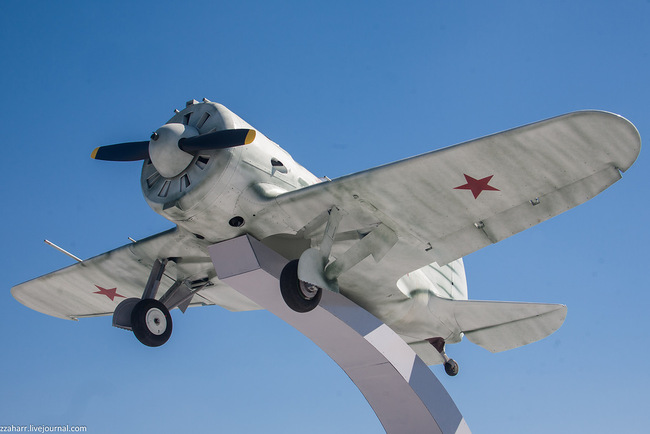
4. Aero L-39 “Albatros” (Aero L-39 Albatros)

5. Su-17M Soviet fighter-bomber model 1970
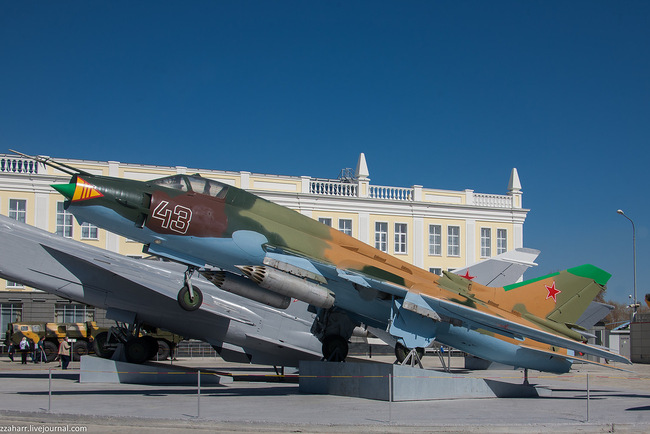
6. Actually, I see this plane near for the first time, and therefore it was extremely interesting to examine it in more detail and discover all sorts of interesting things.
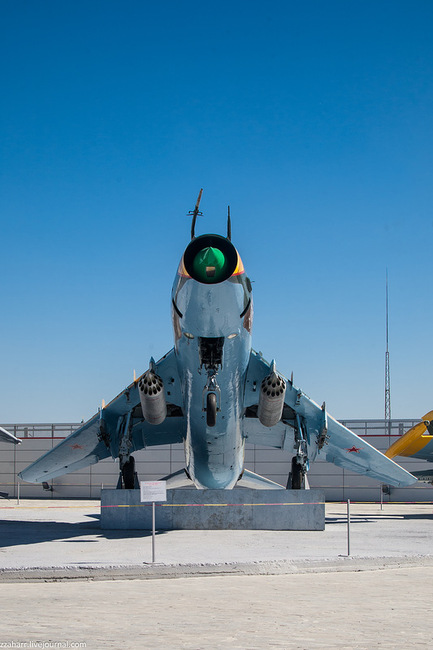
7. It turns out that some device is mounted in the nose cone cone (probably an aiming system)
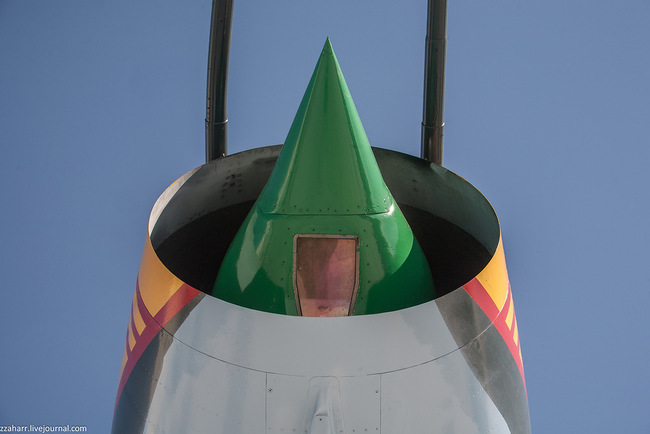
8. Additional air intakes in front of the cockpit
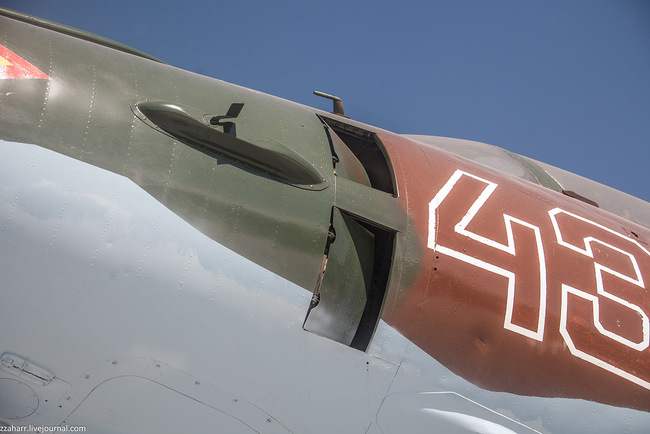
9. Beam holder BD3-USK-A
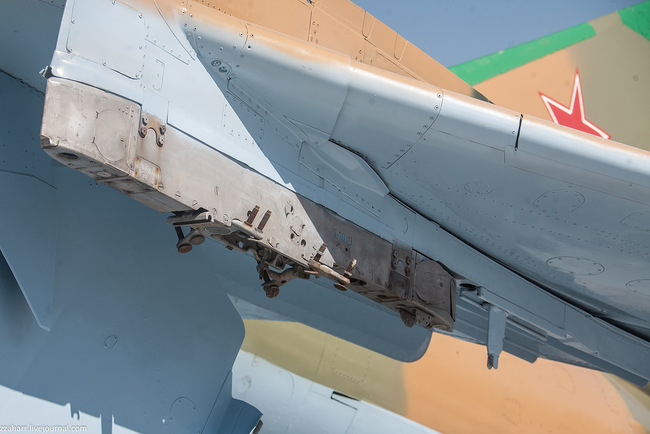
10. B8M1: a block of unguided aircraft missiles of caliber 80 mm.
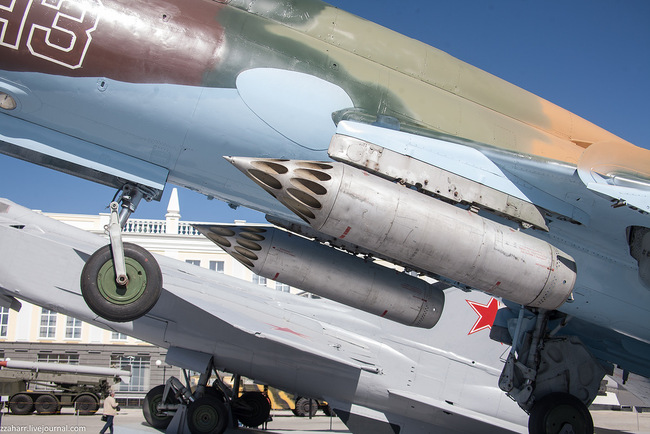
11. But what kind of mounts on the top of the fuselage, I still could not find out. Surely there are knowledgeable people who will explain what it is and why it is on a bomber.
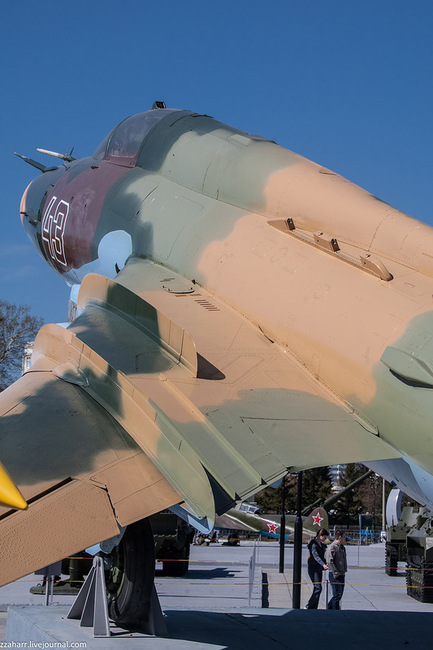
12. While preparing the material, I managed to read that the Su-17M4 is the last production modification. It was distinguished by a new digital sighting and navigation complex PrNK-54, unregulated air intake and an additional air intake in front of the keel for cooling avionics. It has been developed since March 1977. It was produced in 1978-1990; So isn't he in front of us?

13. MiG-31

14. I never get tired of being amazed at the size of this fighter.

15. Some details are missing, but against the background of missing engines, this is a trifle.
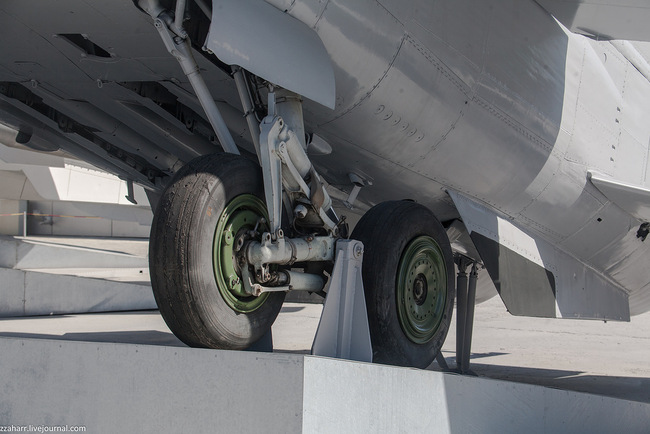
16. Su-24M
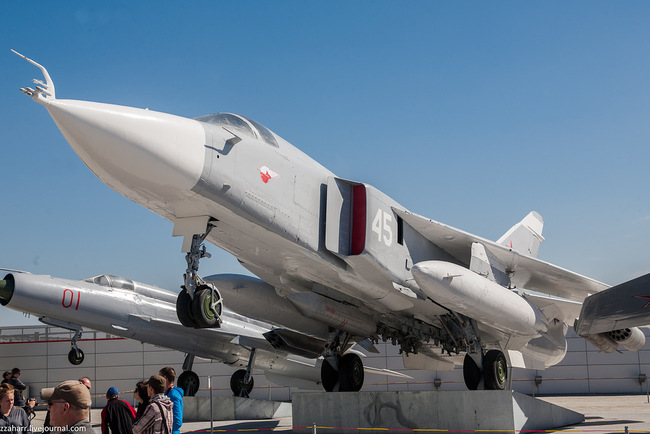
17. Armed to the fullest. Only the bombs on the holders are missing.
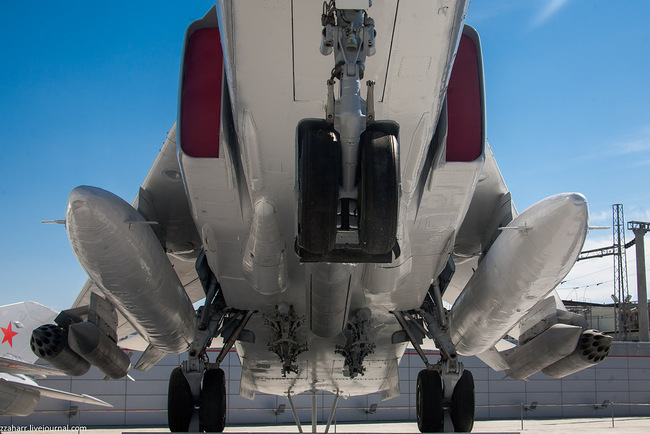
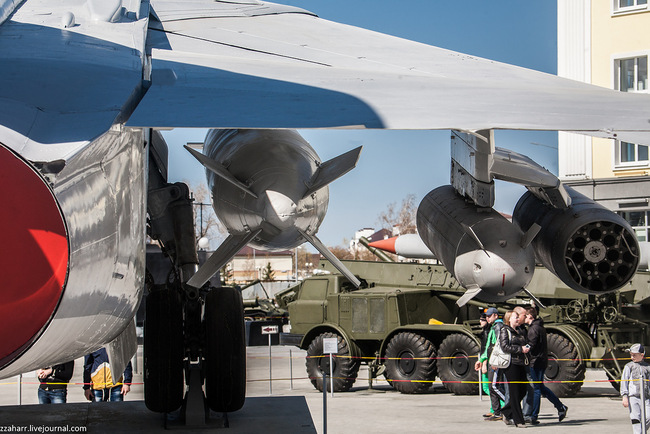
19. B8M1 and? .. What is it, a PTB or some kind of container, and why do I need to take a check on it before flying?
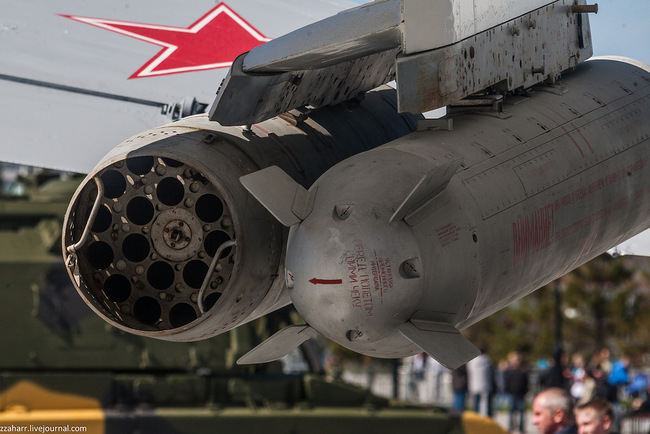
20. MiG-21PF.
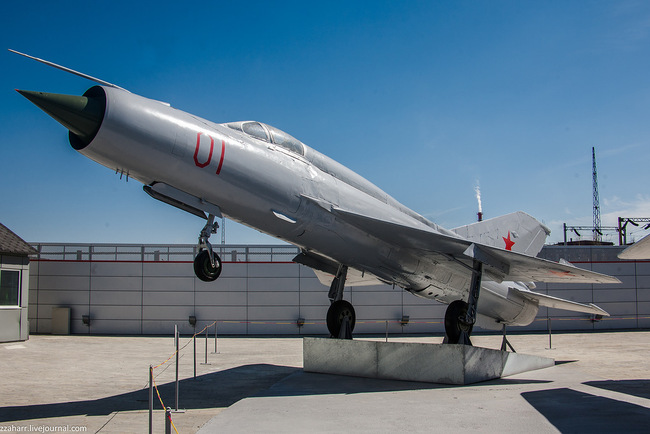
21. Judging by the gnawed tire, he didn’t stand idle on the ground at one time.
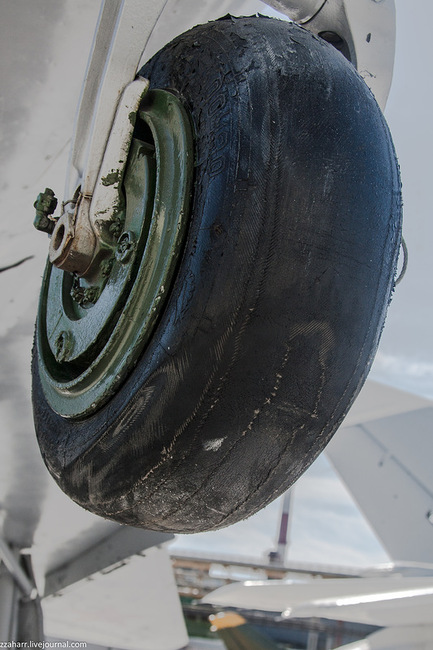
22. Mi-24D
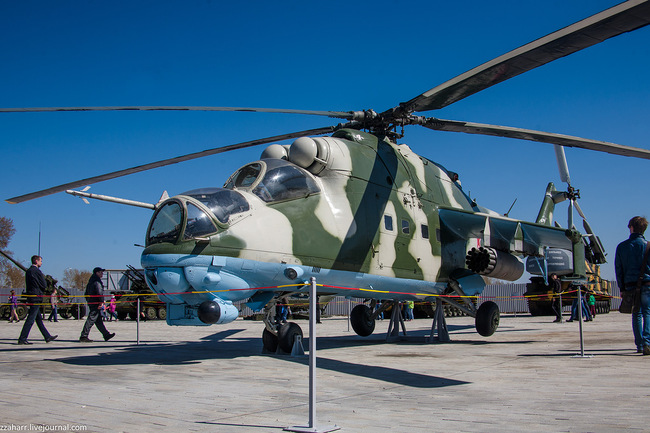
23. USPU-24 with remote control there is, but a four-barreled machine gun YakB-12.7 mm with an ammunition load of 1400 rounds - no.
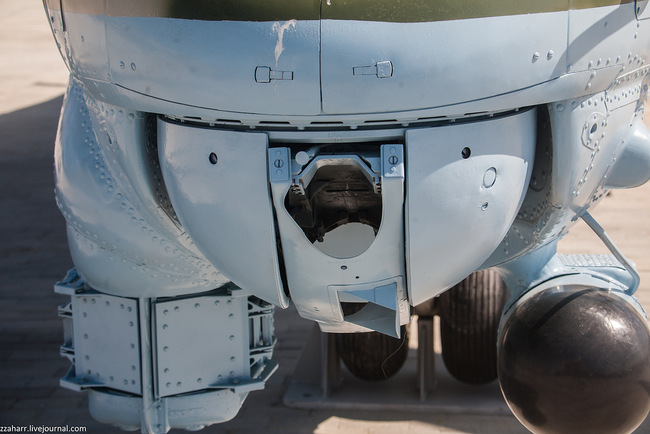
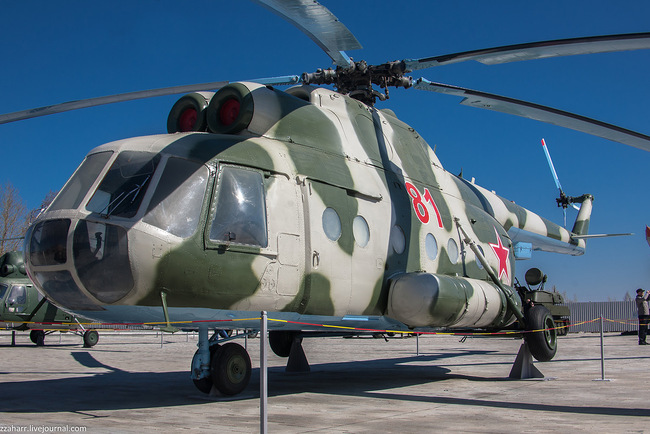


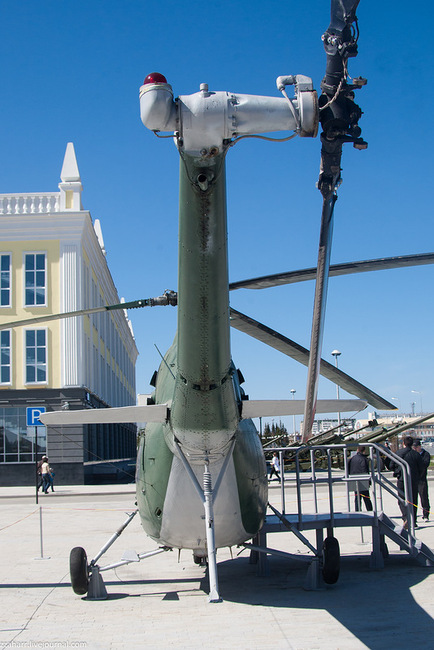
28. Former owners were not very greedy, so the cabin and instrument panel are almost complete

29. And now I invite you to continue the tour to the indoor pavilion. My first word when I got inside myself was "wow!"
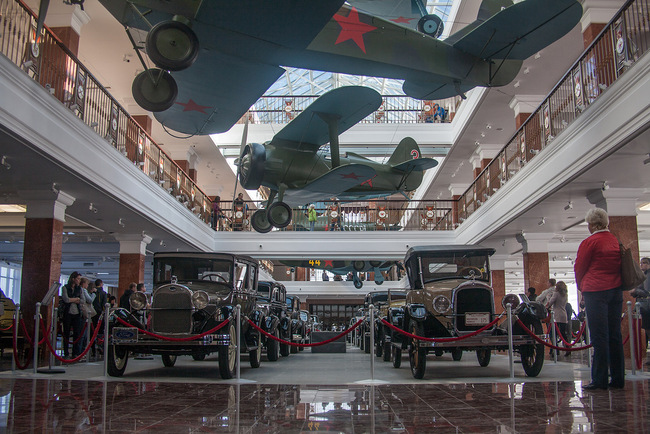
30. I’ll tell you about cars the next time, but for the time being about airplanes. The initial delight subsided when I realized that these were not even replicas, but layouts. Albeit full-sized, but layouts.
In the foreground LaGG-3
After living almost 6 years in Yekaterinburg, I never visited a single museum in this city. Yes, to say nothing, when I was a resident of Nizhny Tagil, I visited Yekaterinburg theaters more often than when I moved here. Therefore, not so long ago, it was decided to correct the situation. In anticipation of May 9th to cultivate, I went to the museum of military equipment " Battle glory Urals ”and didn’t regret about her choice.
The museum was opened on May 9, 2006. The exhibition then consisted of 10 exhibits. In 2012, the museum's collection totaled more than one hundred copies of equipment located on an open area. In 2013, the three-story building of the Museum Exhibition Center was opened, where visitors are presented with samples of light military equipment, small arms, retro cars and motorbikes, exhibits showing the history of the award system, as well as copies of aircraft of the Great Patriotic War. 70-80% of cars are still on the go.
In my opinion, the exhibition is simply gorgeous, I was very surprised that all this time I had such an amazing museum at my side. The exhibits will be interesting to both adults and children. I believe that this is an ideal place to instill in them love for the Motherland and pride in it.
The museum is located at the entrance of Uralelectromed OJSC. In front of the entrance there is a memorial complex “Cranes” in honor of the factory workers who died in the Great Patriotic War.

Since I am a native of Nizhny Tagil, I will start with the T-34 tank. He was the main tank, which was in service with the Red Army until 1944. Every second "thirty-four", which took part in the hostilities, left the Uralvagonzavod conveyor located in Tagil. This is the most massive medium tank of World War II. In the photos, the modification of the T-34-76 with a 76-mm gun.
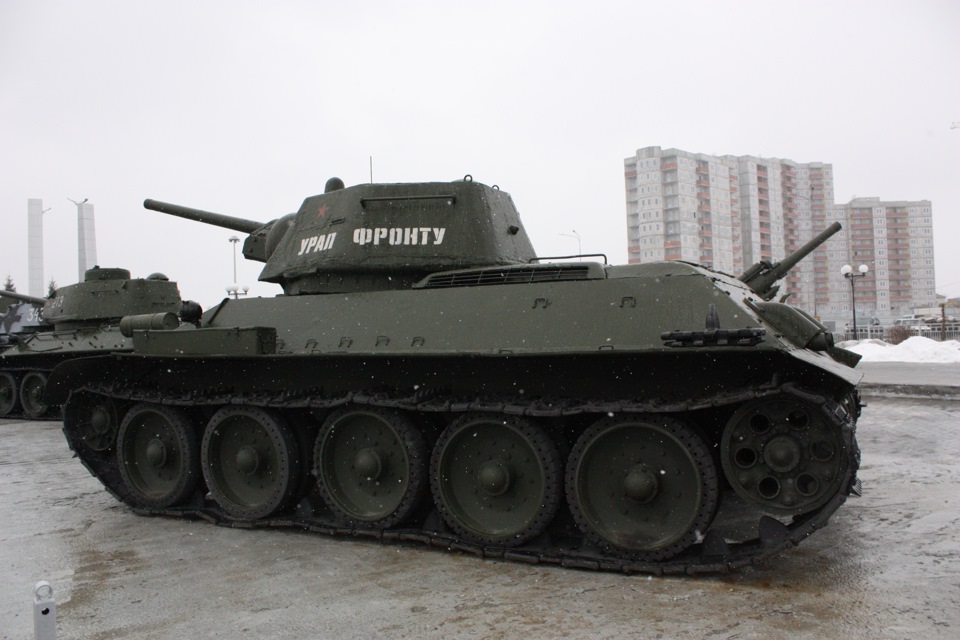

Tank KV-2 - Soviet heavy assault tank of the initial period of the Second World War. Specifically, this exhibit is a full-size layout with genuine elements. The only fully preserved copy is in Moscow.
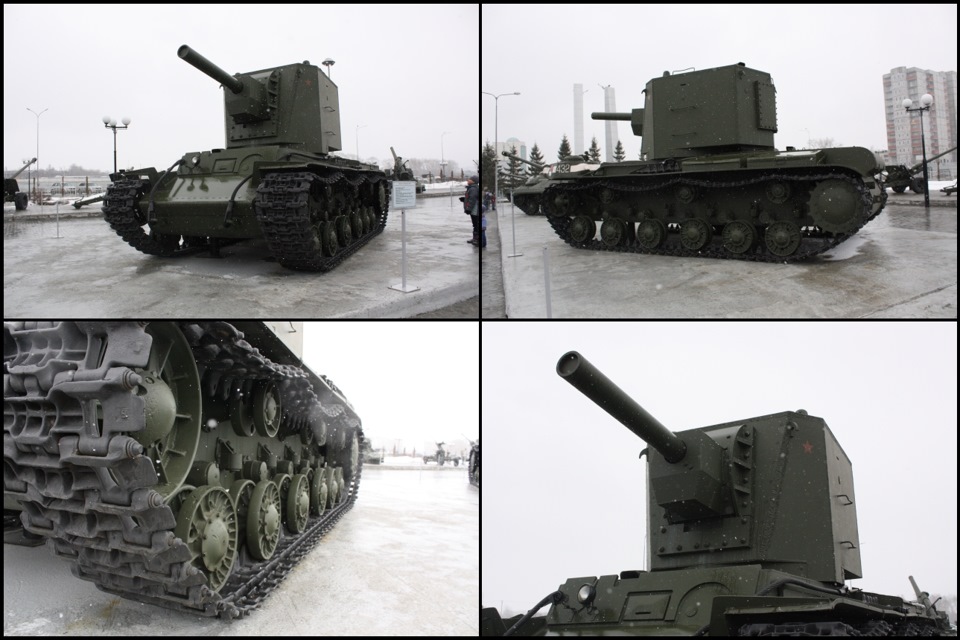

Now, violating the chronology, I will show the very first Soviet tank. T-18 is a Soviet light infantry tank of the 1920s. In the Great Patriotic War, they took part only at the initial stage.

In the foreground is the T-54 medium tank. Used in the war in Vietnam, the Afghan war and other armed conflicts.

T-80UD "Birch" - the main battle tank. T-80 tanks are in service with the Russian Army and the Coastal Forces of the Russian Navy.


ISU-152 were widely used at the final stage of the Second World War. The slang name is "St. John's wort." ISU-152 can also be found in one of the yards of Yekaterinburg on concrete goods.
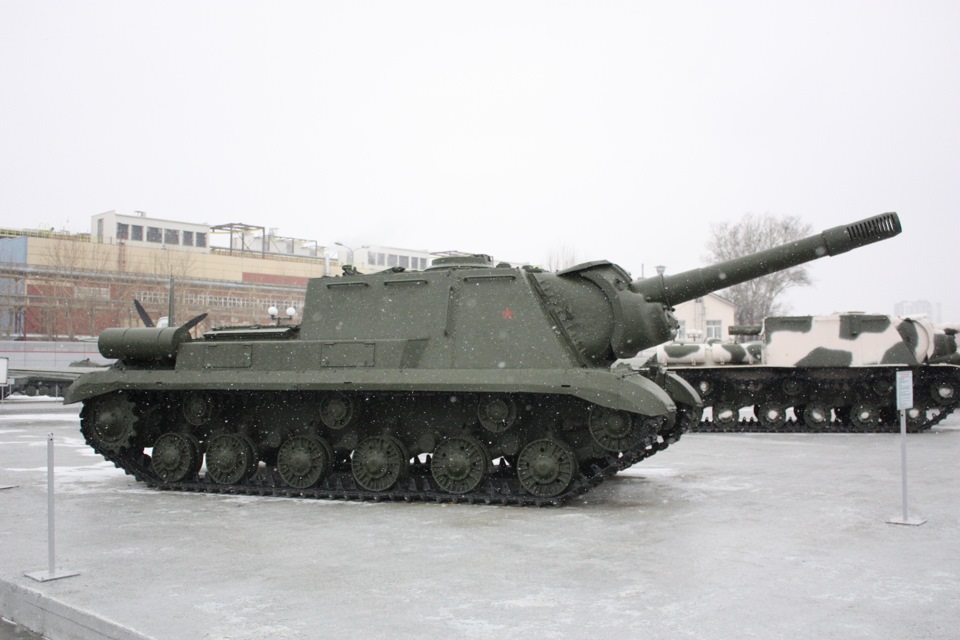
I am a man of little knowledge in military equipment, but I recognized this exhibit from afar. BM-13 under the national nickname "Katyusha". The legendary combat vehicle with rail guides mounted on the chassis of the car on which rockets are mounted. In 10 seconds, Katyusha fired 16 shells. During the war years, these combat vehicles were also produced at our plant in Sverdlovsk at the Uralelectroapparat plant, where one more instance can now be found.
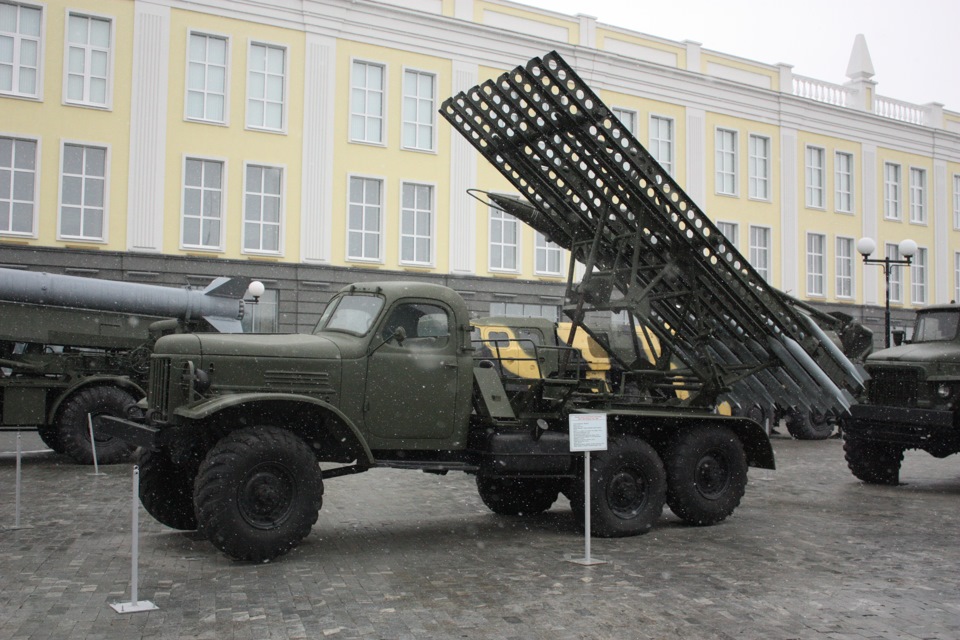

The most famous operational tactical missile system is the 9K72 Elbrus with the 8K14 ballistic missile, which has the western name Skud.
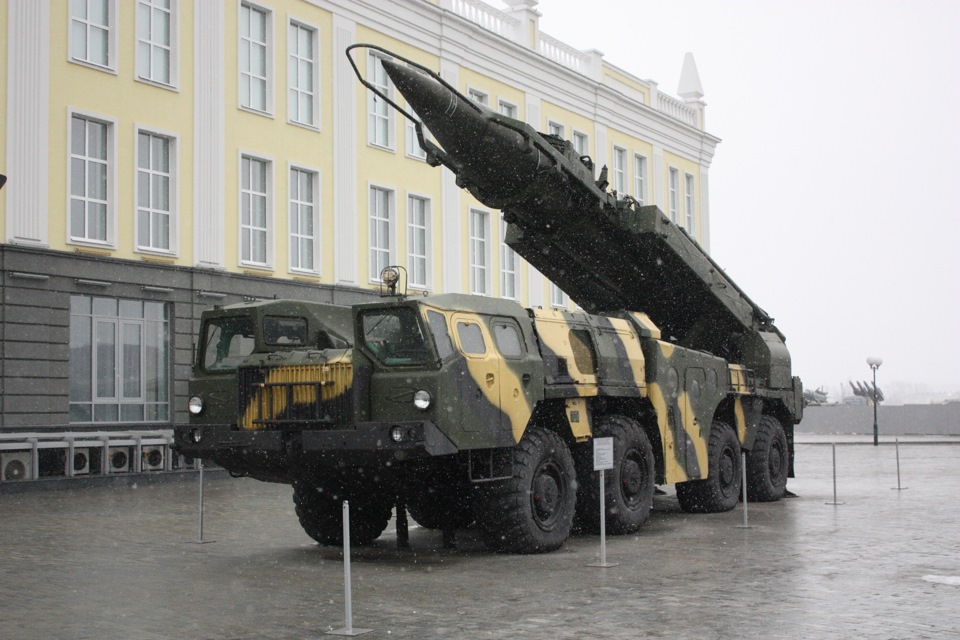
One of the most popular biplane aircraft of the 1930s in the USSR is the R-5.
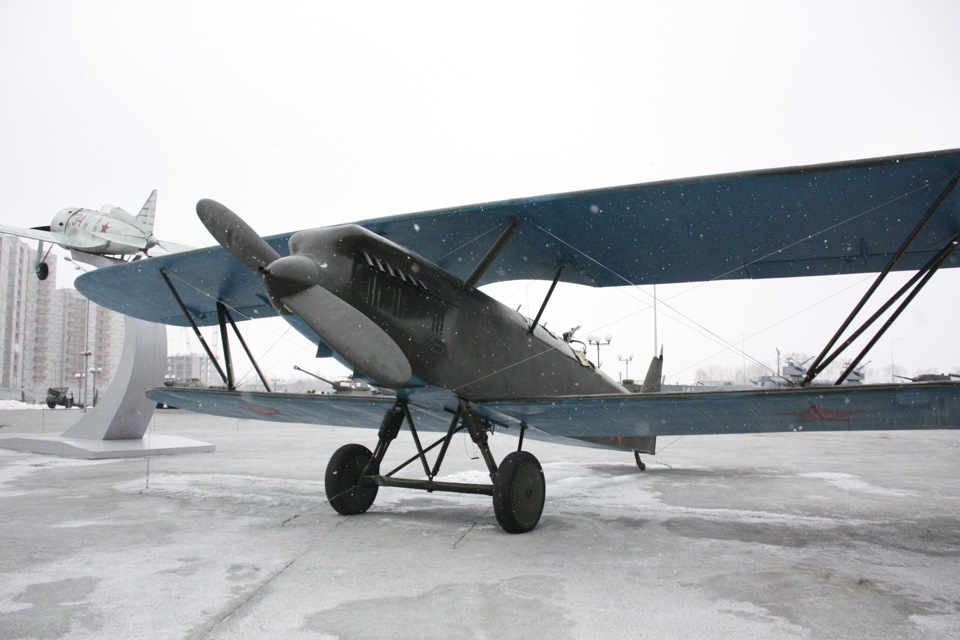
The most massive Soviet fighter of World War II is the Yak-9 fighter. He was the main opponent of the German Messerschmitt Bf.109.
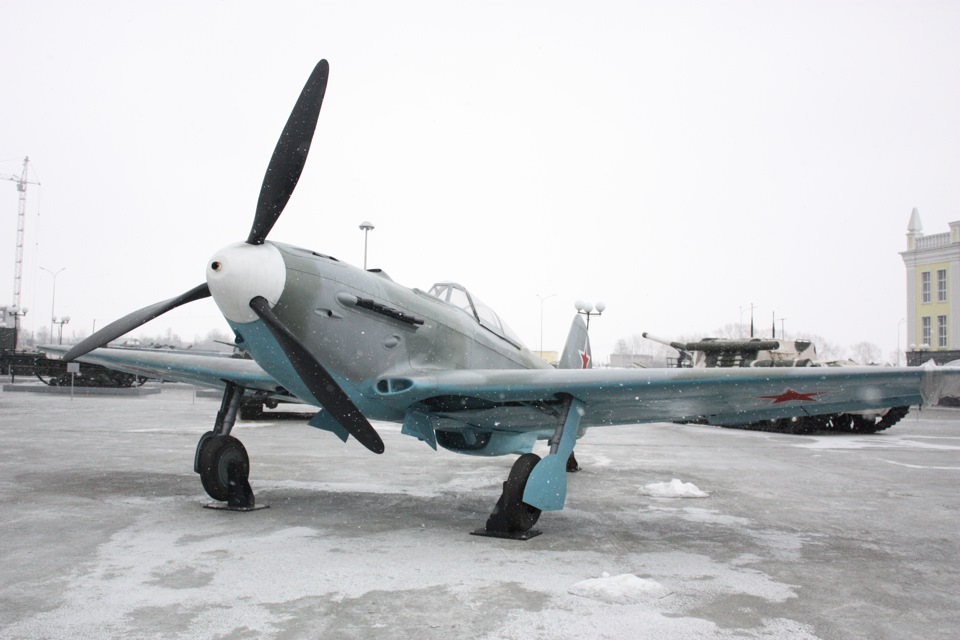
The first Soviet aircraft with a wing of variable geometry - Su-17. They were used in the Afghan war. Su-17 removed from service in Russia in 1998.
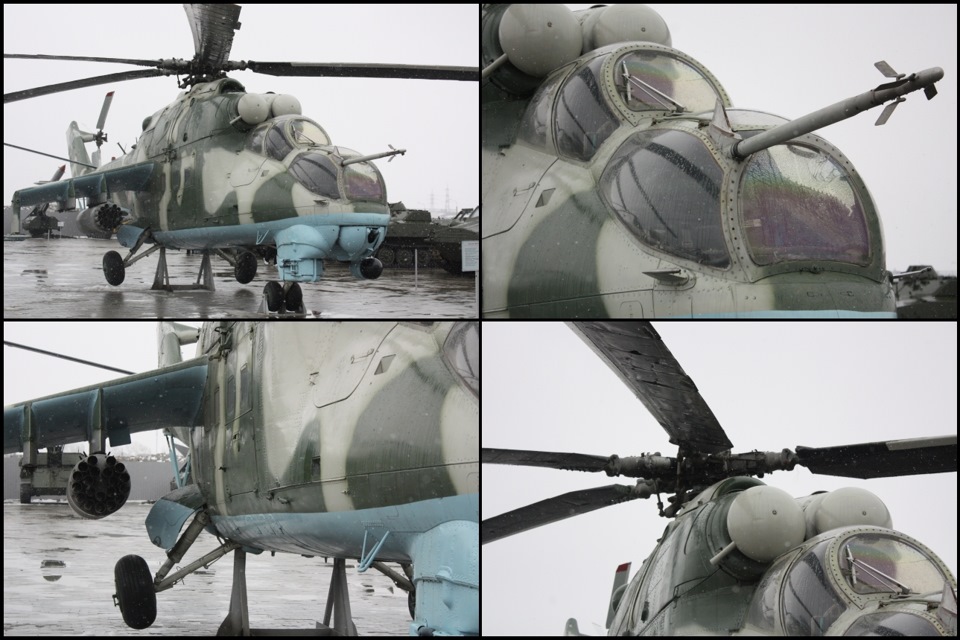
And this is only a small part of all the exhibits presented. I recommend that residents of Yekaterinburg and its environs, guests of the city, go to Verkhnyaya Pyshma and visit this wonderful museum. And choose the weather better. Precipitation and wind are not very conducive to a detailed examination of the exhibits in the open air)
I’ll talk about the three floors of the exhibition center later.
Museum of military equipment "Combat Glory of the Urals" is located in the city of Verkhnyaya Pyshma, on the street. Alexandra Kozitsyna, 2. Entrance to the open area is free, to the Exhibition Center - 100 p.
Imagine that you are a visitor to the Paleontological Museum and, with your head up, walk enthusiastically between giant diplodocus and other pterosaurs. And then they tell you - sorry they say, but it's time to feed the animals. The sign "Lunch" is hung up and exhibits with uterine rumbling I run off to the back yard to sniff my carrots. I also experienced something similar when I asked the caretaker of the Museum of Military Glory of the Urals about the reason for the presence of a large number of empty pedestals and the absence of exhibits themselves.
How is it where - they looked at me with undisguised surprise - they left for the parade!
And here’s the video of the march from the museum.
It’s good that not everyone left, and we have a great opportunity to get acquainted with what constitutes the “military glory of the Urals”. Many of the exhibits were made, in the literal sense of the word, behind a neighboring fence.
Let's start with the artillery ranks.

2A36 "Hyacinth-B" - Soviet 152-mm towed gun with increased firing range, developed in the Perm Design Bureau of the Perm Engineering Plant in November 1968 under the leadership of Yu.N. Kalanchikova. In 1976, 2A36 was adopted by the Soviet Union and was intended to suppress and destroy enemy personnel, firepower and military equipment on the march, at concentration sites and at strong points. The barrel length along with the muzzle brake is 8197 mm.
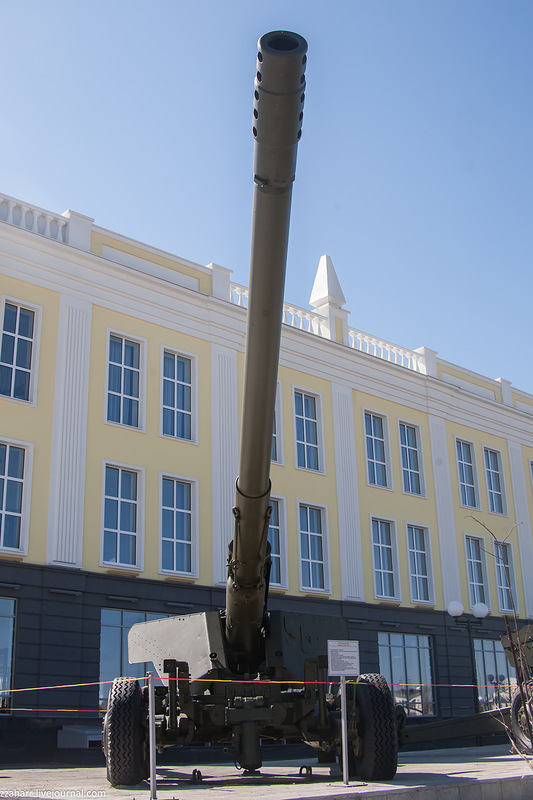
152 mm howitzer gun D-20 (52-P-546)
D-20 was designed in Yekaterinburg OKB-9 under the leadership of Petrov. Serial production began in the 55th year at the factory number 221 in Volgograd (now FSUE "Barricades").
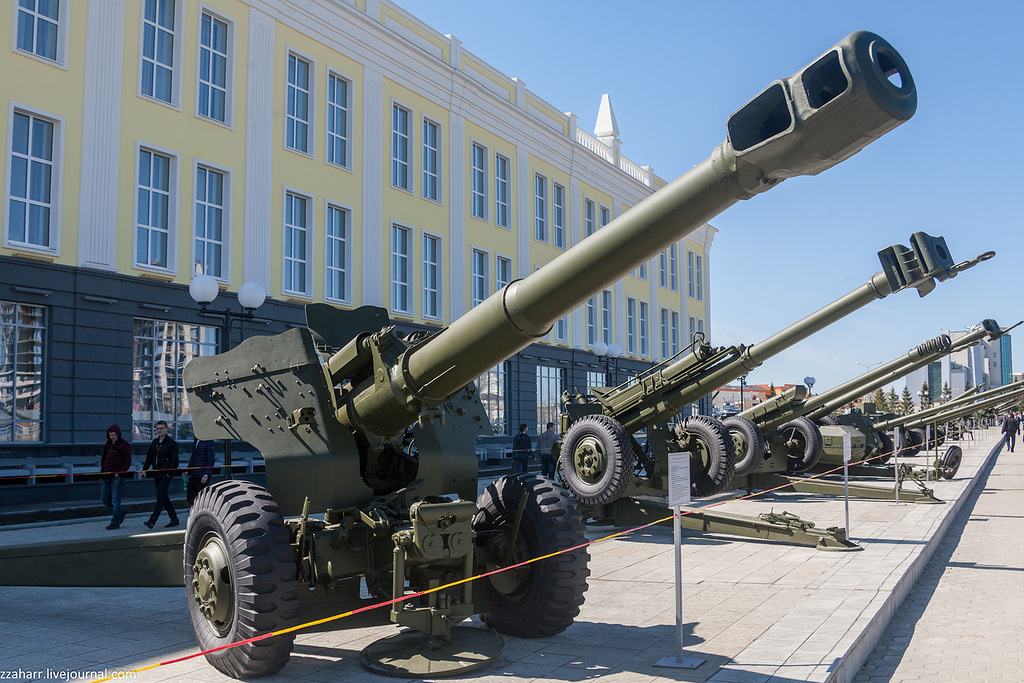
Howitzer 2A61 - one of the latest artillery pieces of the Russian army. The howitzer was developed by GUP (State Unitary Enterprise) "Plant No. 9" in Yekaterinburg.
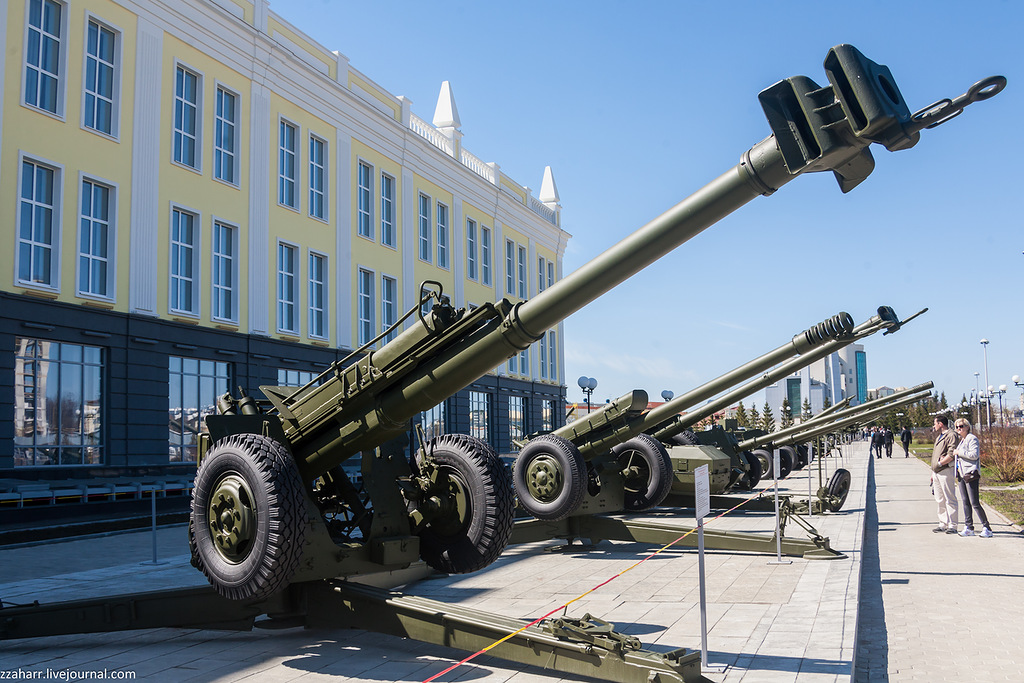
The muzzle brake is simply epic.
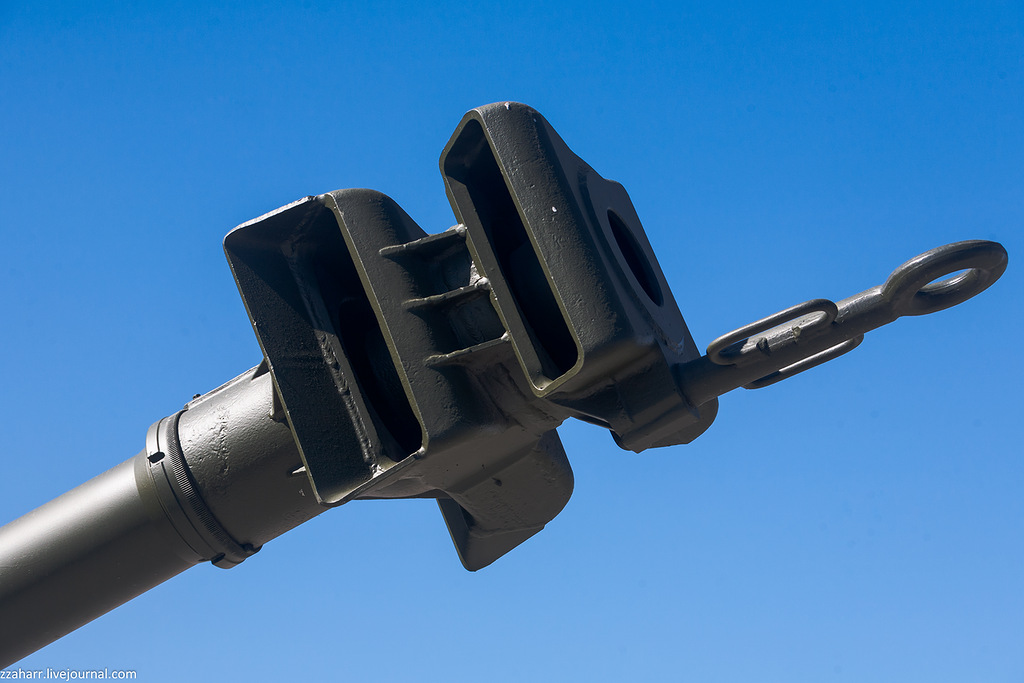
The 2A45M Sprut-B gun was created in the late 1980s at the Petrov Design Bureau. This 125-mm semi-automatic gun is interesting in that, with the help of an auxiliary power plant, it can independently travel short distances to escape from return fire.
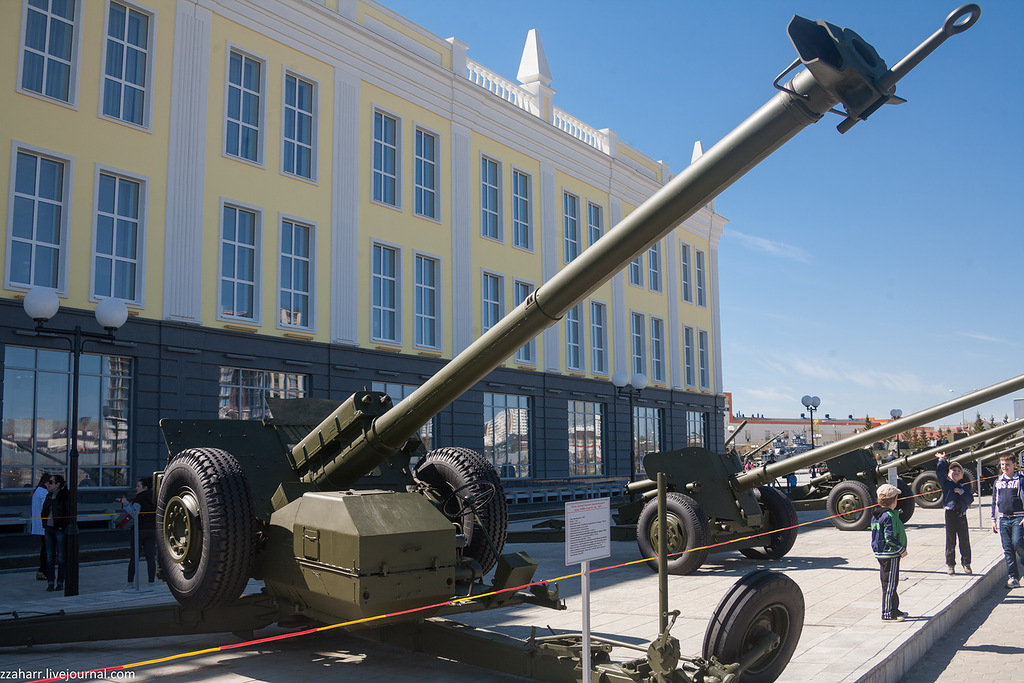
100-mm anti-tank gun MT-12 (GRAU index - 2A29, in some sources it has the name Rapira) - a Soviet towed anti-tank gun, created in the late 1960s. In the background, her early version is a 100mm T-12 gun.
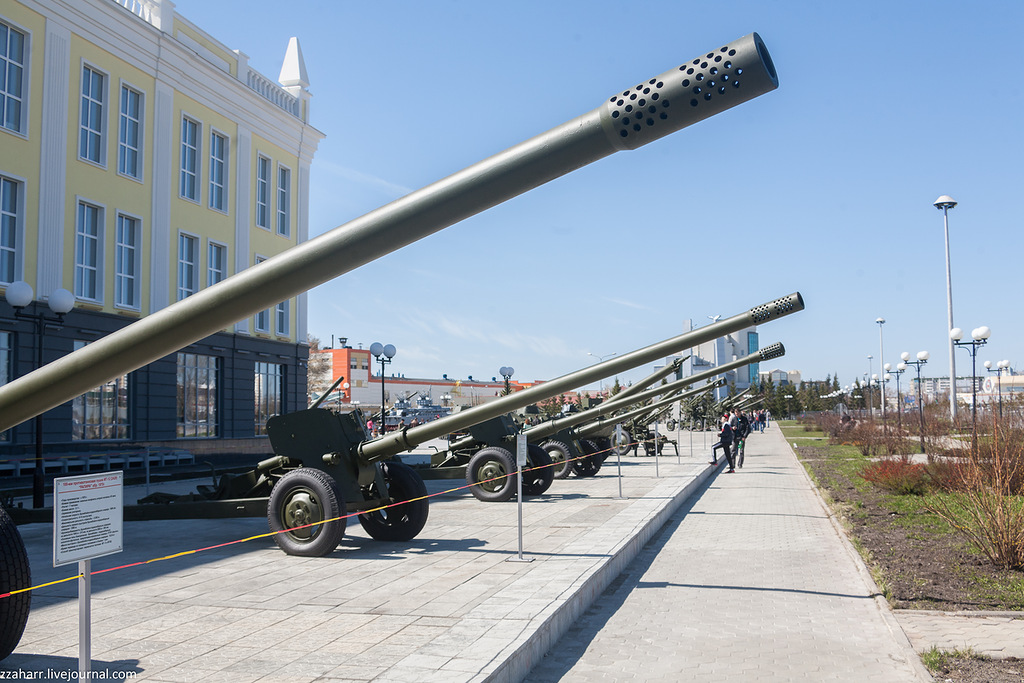
M-240 - 240 mm towed mortar.
Year of issue: 1951
Year of discontinuation: 1958
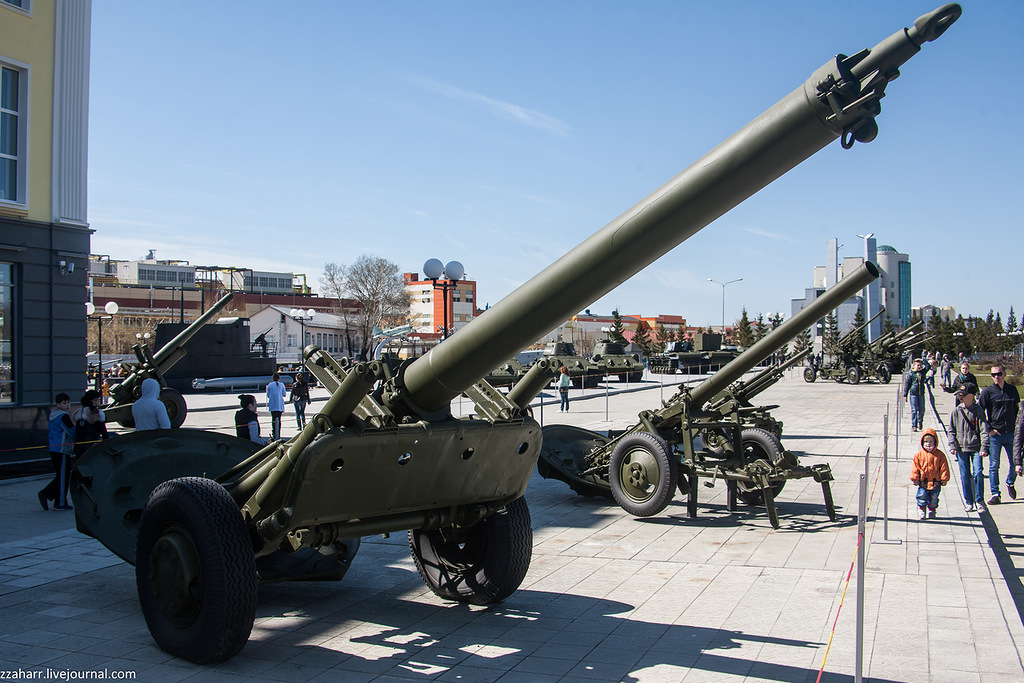
The famous Stalin's Sledgehammer, a 203-mm howitzer of the 1931 model. B-4 (GAU Index - 52-G-625) - Soviet howitzer of high power caliber 203.4 mm (8 inches).

M-42 (GAU Index - 52-P-243S) - a Soviet semi-automatic anti-tank gun of 45 mm caliber. sample of 1942.
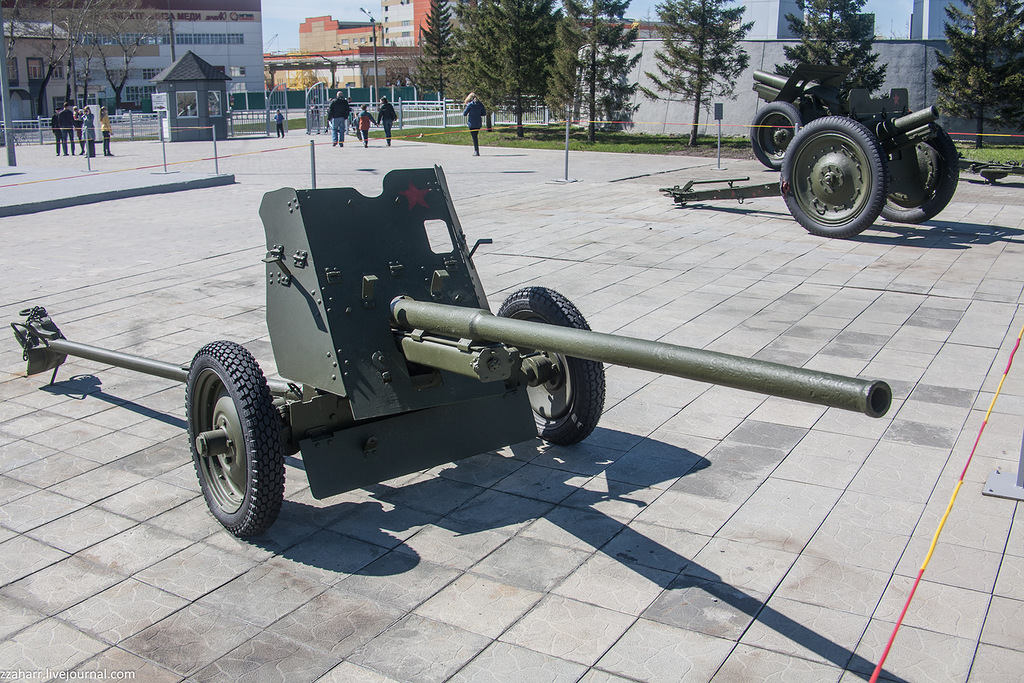
152 mm howitzer model 1909/30 years.
Weight in combat position - 2725 kg.
The largest firing range - 9850 m.

The real monster is a 210-mm gun of special power Br-17 arr. 1939. The cannon was fired with separate shotgun loading with high-explosive shells weighing 133 kg. The largest firing range was 29,400 m. The gun was transported on mechanical traction and only in unassembled form on three carts: the receiver, the cart for the machine and the base cart.
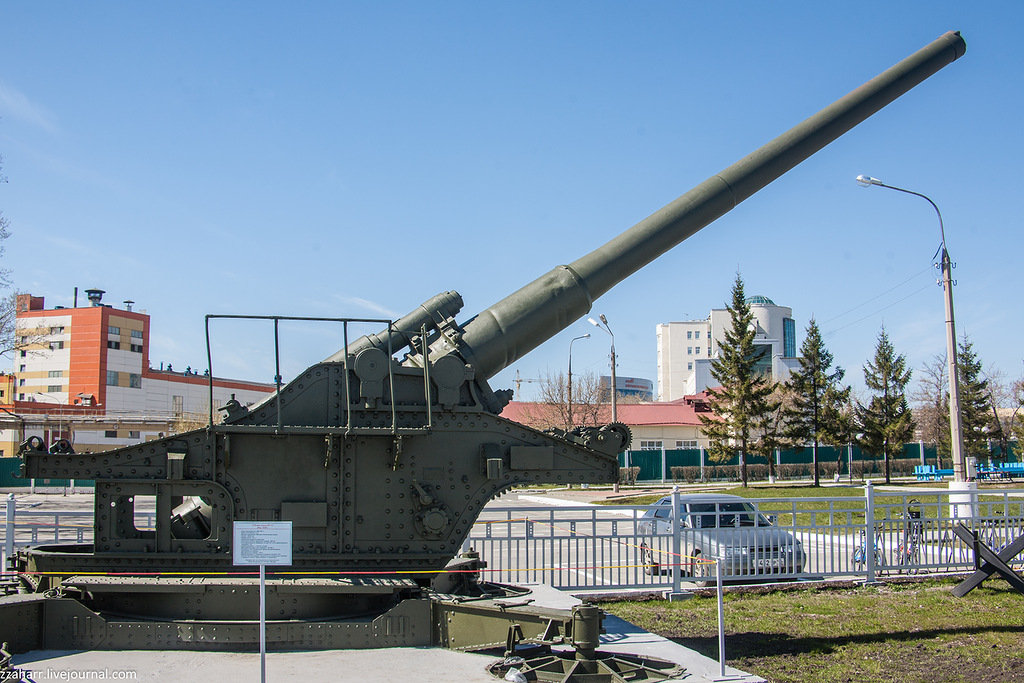
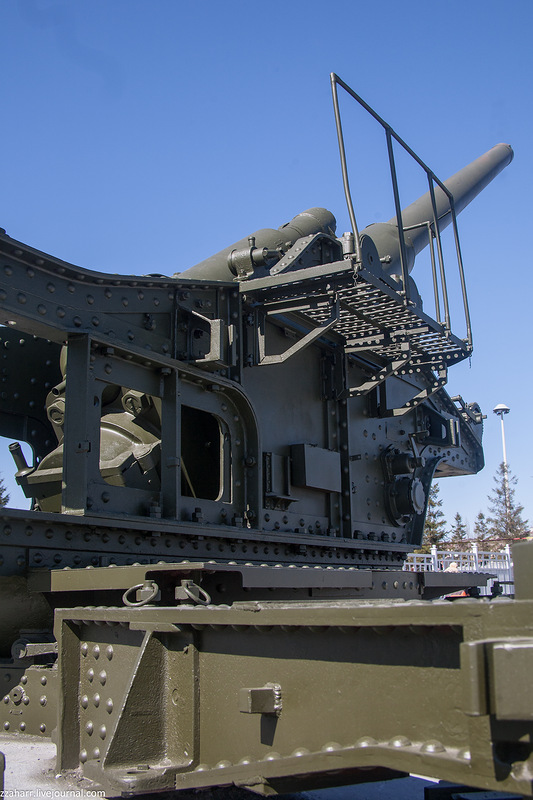
A little distraction on the marine exposition.
Mock-up of a medium-sized diesel submarine of the Pike type.
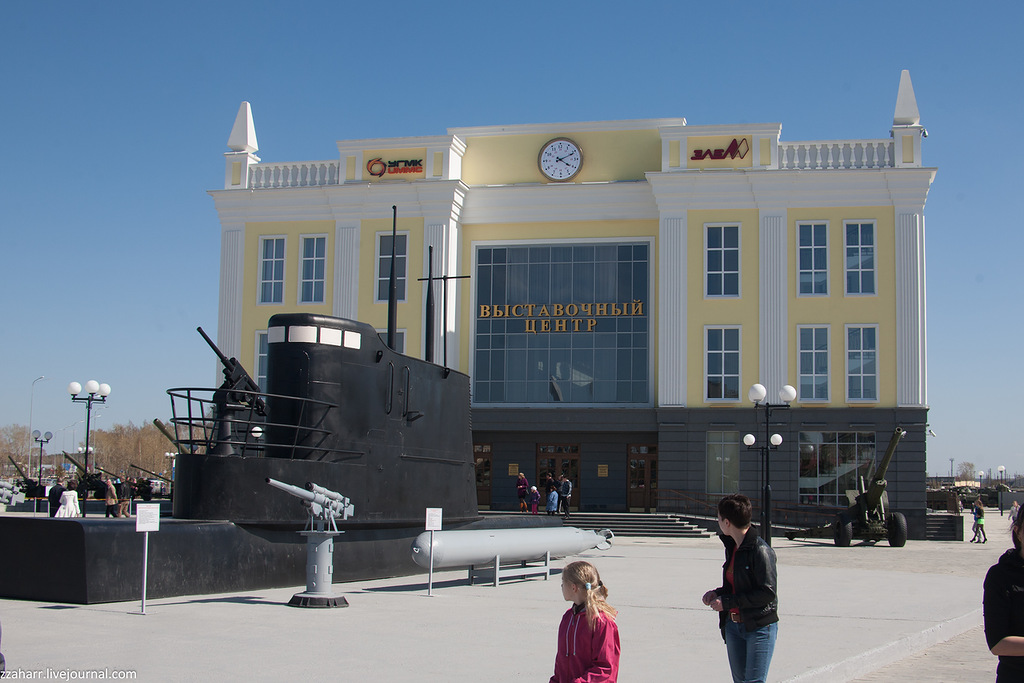
Model of the Komsomolets torpedo boat (project 123 bis).
Redunny boat with duralumin hull. Two Packard aircraft engines were installed in the hull one after the other, while the length of the left propeller shaft was 12.2 m and the right was 10 m. Speed: Maximum: 48 knots / Cruising: 28.8 knots.

T-18 (MS-1) - Soviet light infantry tank of the 1920s. It was created in 1925-1927 on the basis of the French FT-17 tank and its Italian version “Fiat 3000” and became the first tank of the Soviet development. Serially produced from 1928 to 1931
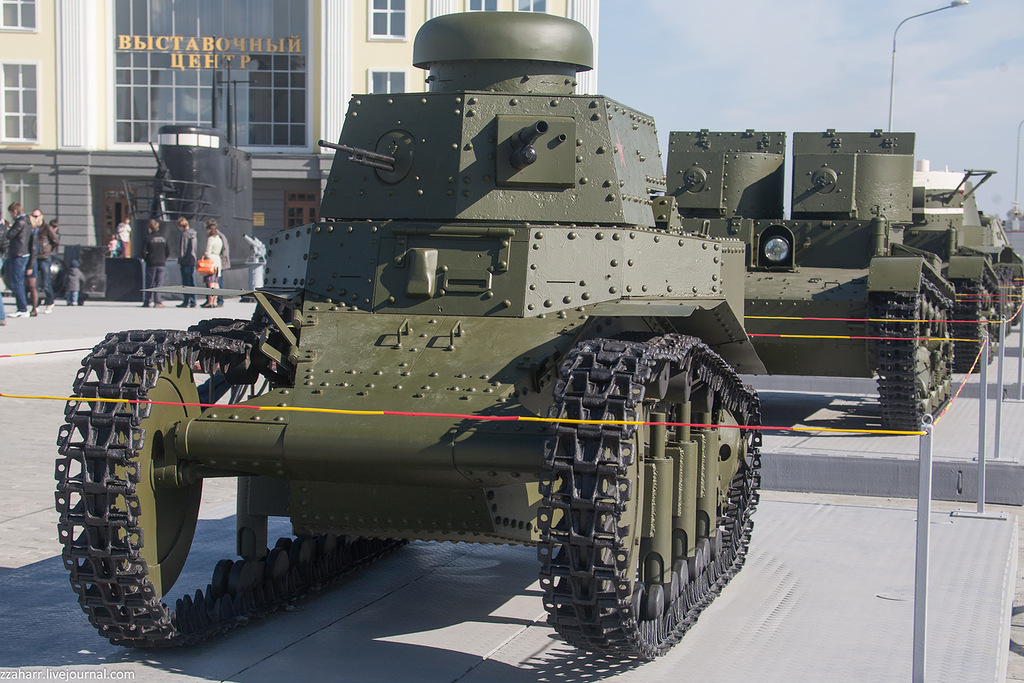
T-26 - Soviet light double-turret tank. Adopted in the USSR in 1931. The two-tower modification of the T-26 is the earliest. It was on tanks of this type that the British purchased a license. The tank did not have serious combat power, although sometimes the command vehicles were re-equipped with 37 mm cannons.


Light tank T-26 mod. 1933, BT-7 - Soviet light wheeled and tracked tank of the period 1930-1940s and T-70 - Soviet light tank of the period of World War II. Designed in October - November 1941 at the Gorky Automobile Plant (GAZ)
Heavy assault tank KV-2.
The armored hull of the tank was welded from rolled armored plates with a thickness of 75, 40, 30 and 20 mm. Equivalent armor protection (armor plates with a thickness other than 75 mm were used only for horizontal reservation of the car), and anti-shell. Armor plates of the frontal part of the machine were installed at rational angles of inclination.
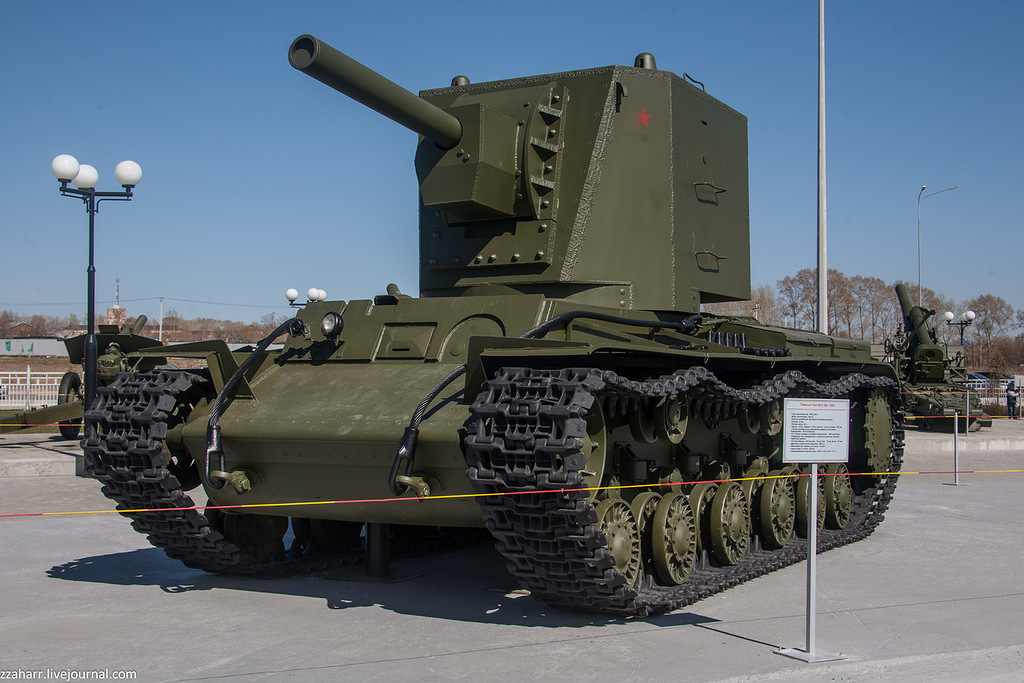

KV-1 (Klim Voroshilov) - Soviet heavy tank from the Second World War. Usually called simply “KV”: the tank was created under this name and only later, after the appearance of the KV-2 tank.
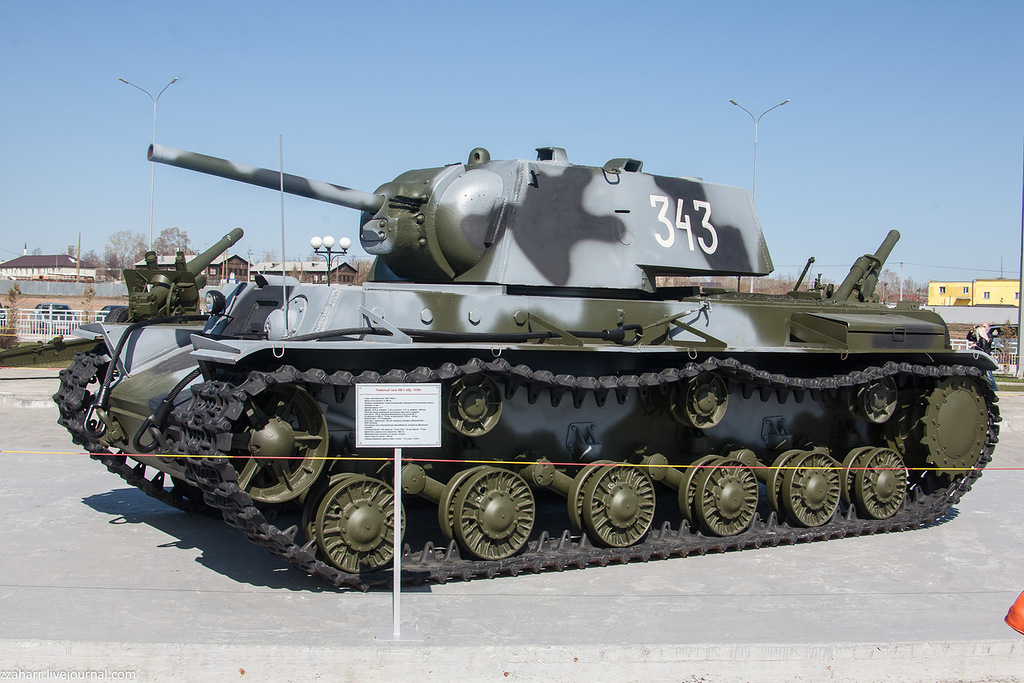
T-34 does not need to be presented. The evolution of weapons and towers is clearly visible in the modernization process.
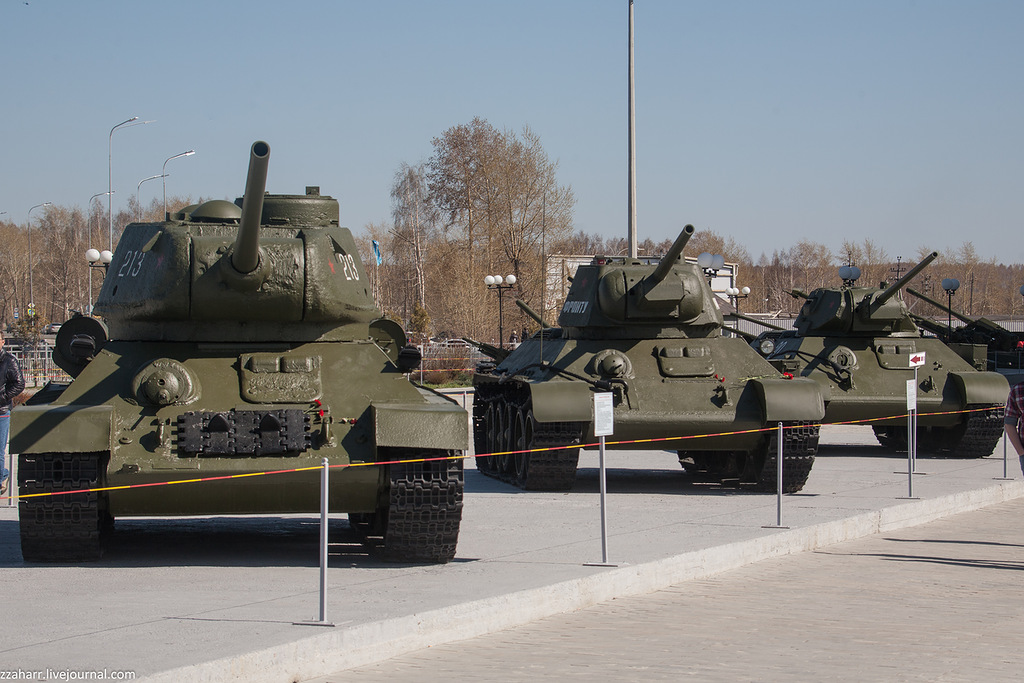
Heavy Soviet tank IS-2. The tank was adopted by the Red Army at the end of 1943 and was mass-produced from 1943 to 1946. It is a modification of the IS-1 tank with weapons, reinforced by the installation of a very powerful 122-mm gun D-25 with a muzzle brake.

Paint marks the places where armor-piercing shells hit.
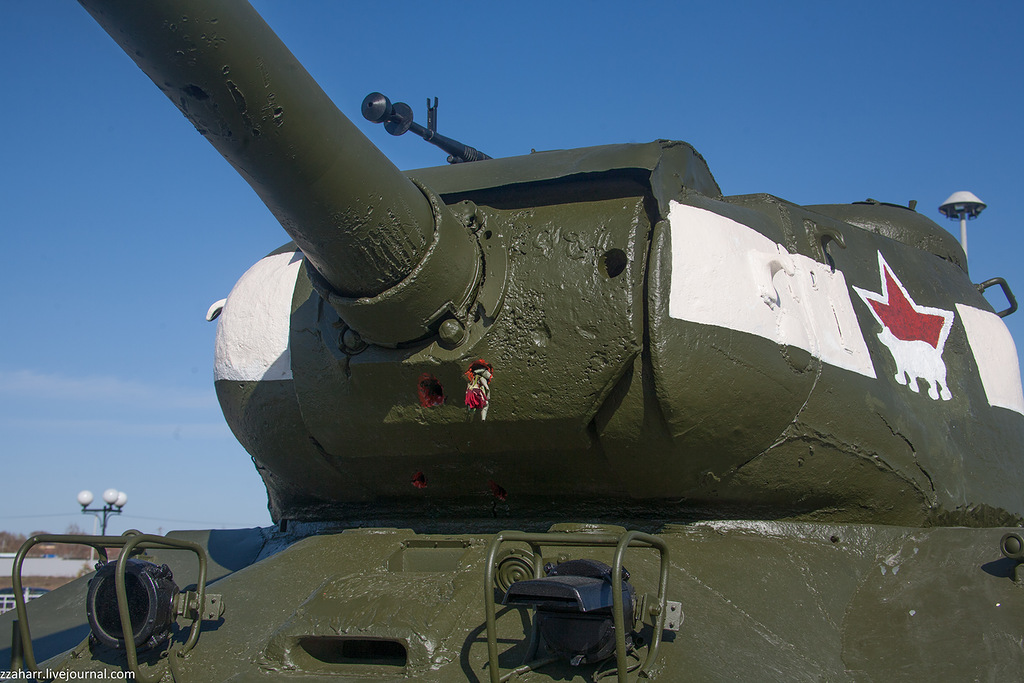
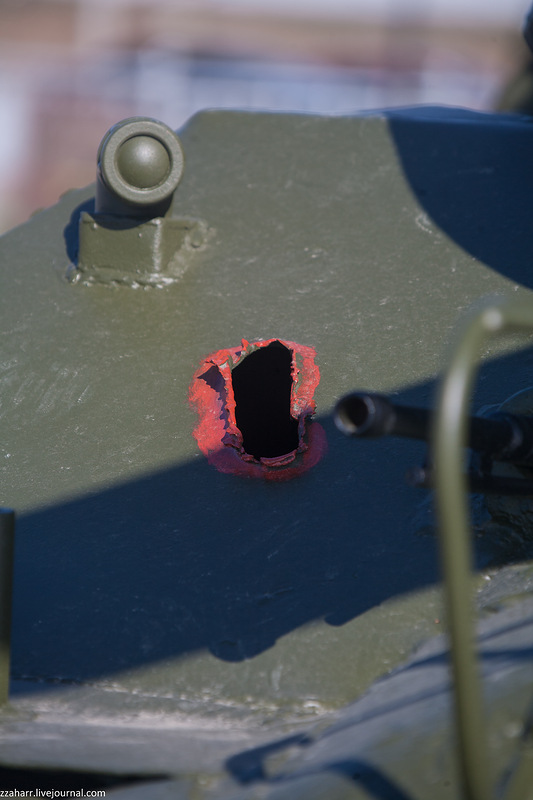
Perhaps the most beautiful tank created in history. The IS-3 (Object 703) is a Soviet heavy tank of the Great Patriotic War period, launched into serial production in its last days and not having time to take part in it.
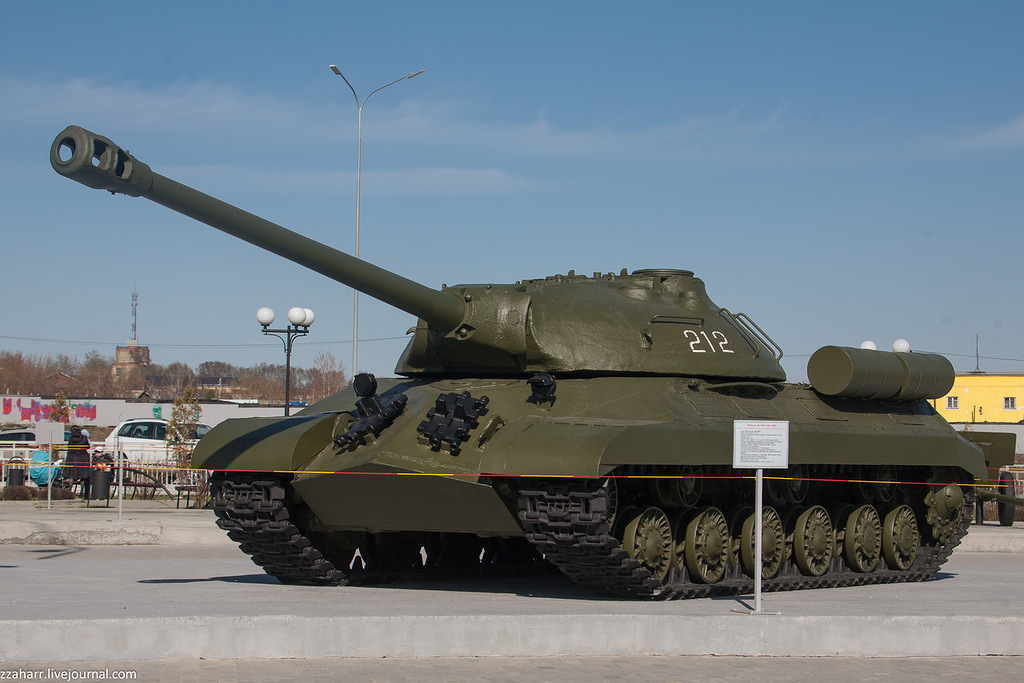
And in conclusion, a little modern technology.
"Peony" (GRAU Index - 2С7, modified - 2С7М, also known as "Malka") is a Soviet self-propelled artillery mount with a 203.2-mm 2A44 gun.
Today it is considered the most powerful self-propelled artillery mount in the world. Throws 102-kilogram active-reactive ammunition at 47.5 km.

2С1 “Carnation” - Soviet 122-mm self-propelled howitzer.
2C3 "Acacia" - 152 mm self-propelled artillery mount.
2S5 "Hyacinth-S" - Soviet 152-mm self-propelled gun.
2S19 152-mm self-propelled howitzer Msta-S mod. 1989 year
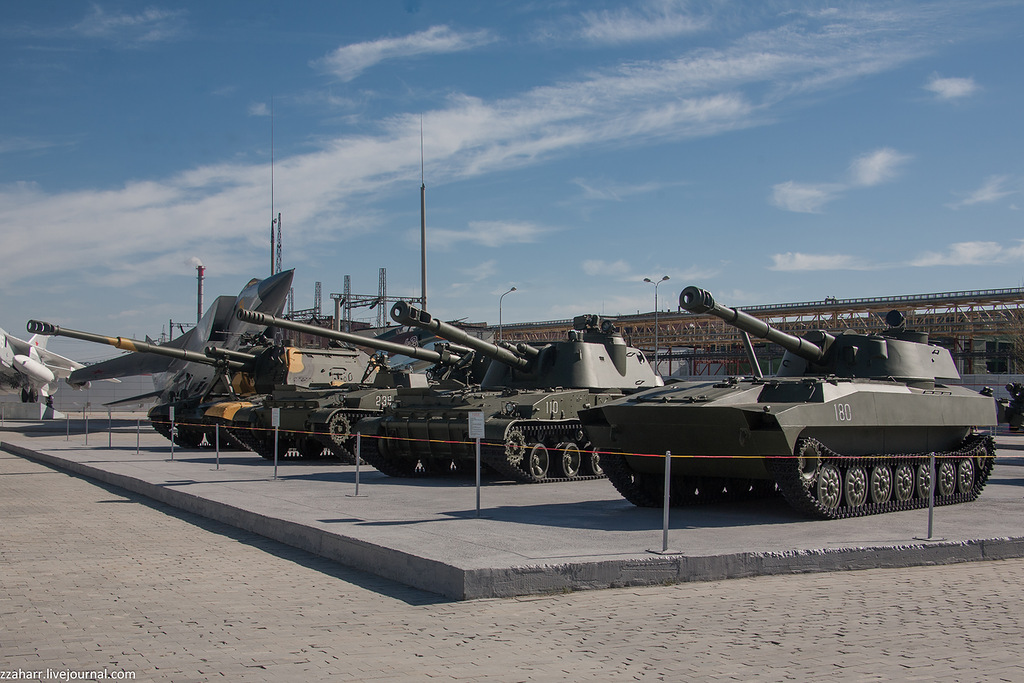
The line of post-war Soviet tanks from T-55 to T-90.
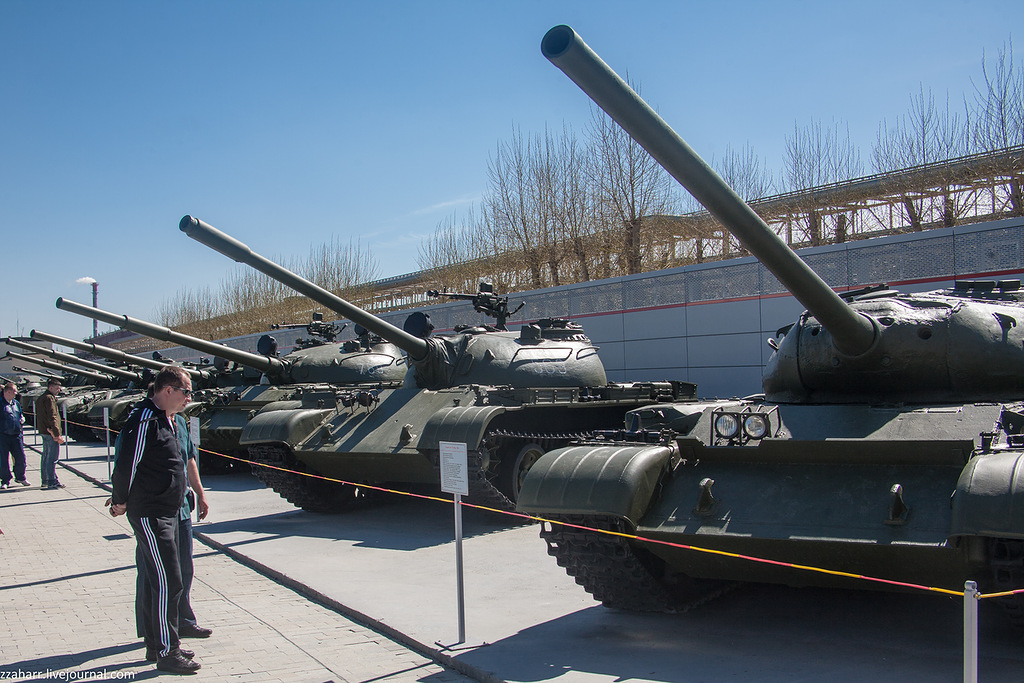
This concludes the series of photo stories about the military equipment museum “Combat Glory of the Urals”.
Of course, much remains behind the scenes, but I think it will be an extra motive for you to visit this wonderful museum complex.
For those who missed, I will repeat the links to the previous parts.
Part 1
can be safely attributed to places not recommended, but highly recommended for visiting. Hundreds of exhibits, many of which are truly unique. It is enough to say that if all military equipment assembled at the museum’s sites in Verkhnyaya Pyshma is “put under arms”, then this artillery-armored fist will surpass many armies of central and western Europe in military power. In addition to aircraft of the USSR era, you will also see cars and motorbikes collected within the walls of this wonderful museum.
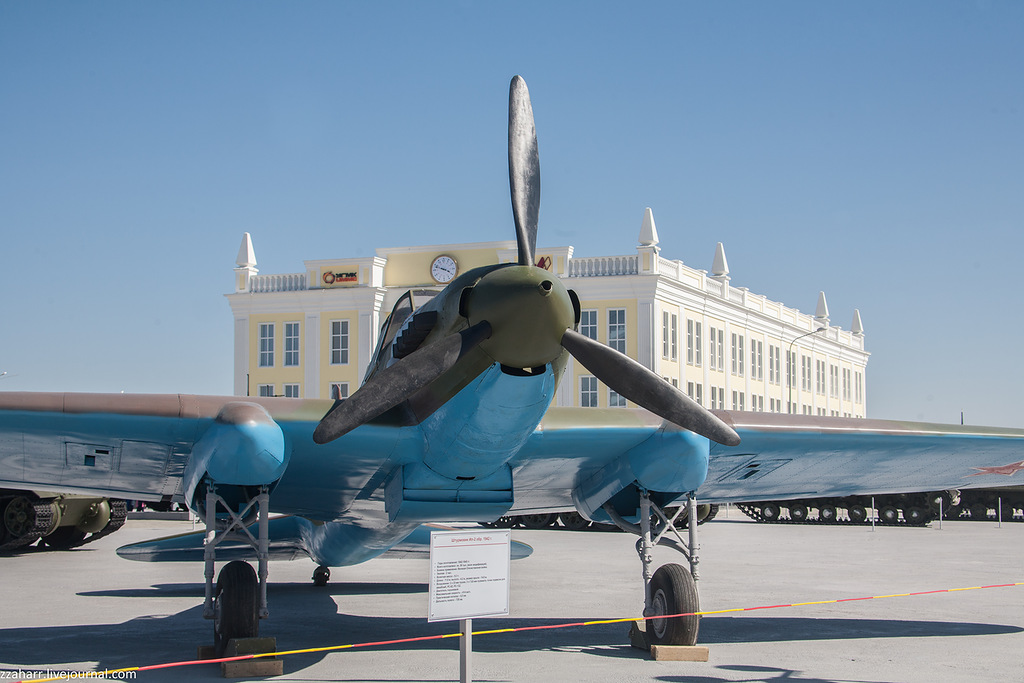
1. IL-2 model of 1942. Restored by the UMMC specialists. 
2.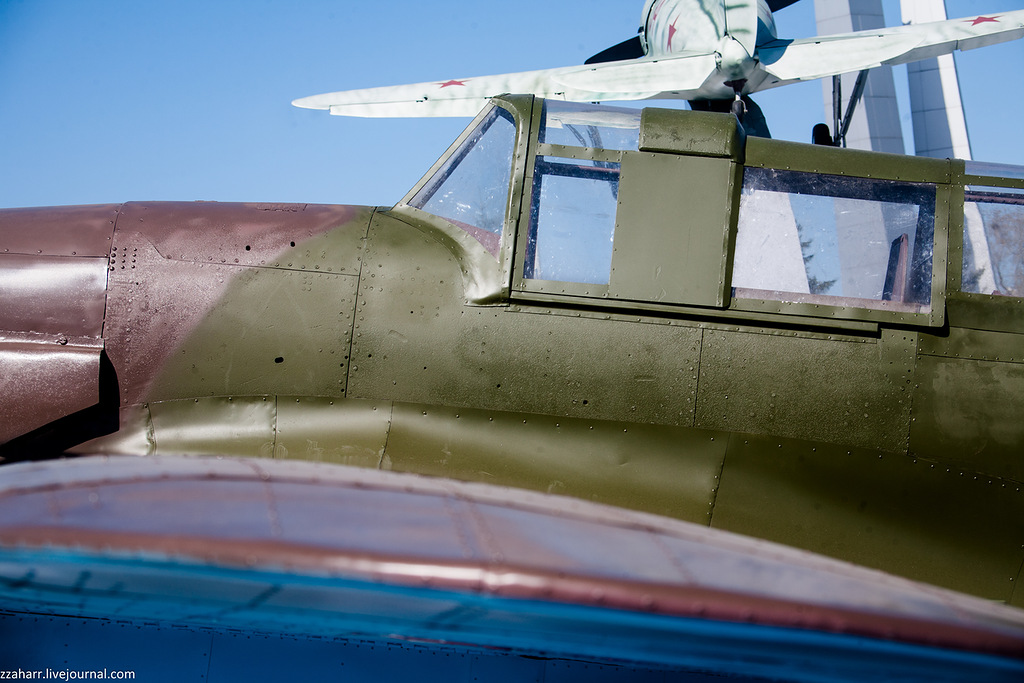
3, I-16 type 24 
4. Aero L-39 “Albatros” (Aero L-39 Albatros) ![]()
5. Su-17M Soviet fighter-bomber model 1970 
6. Actually, I see this plane near for the first time, and therefore it was extremely interesting to examine it in more detail and discover all sorts of interesting things. 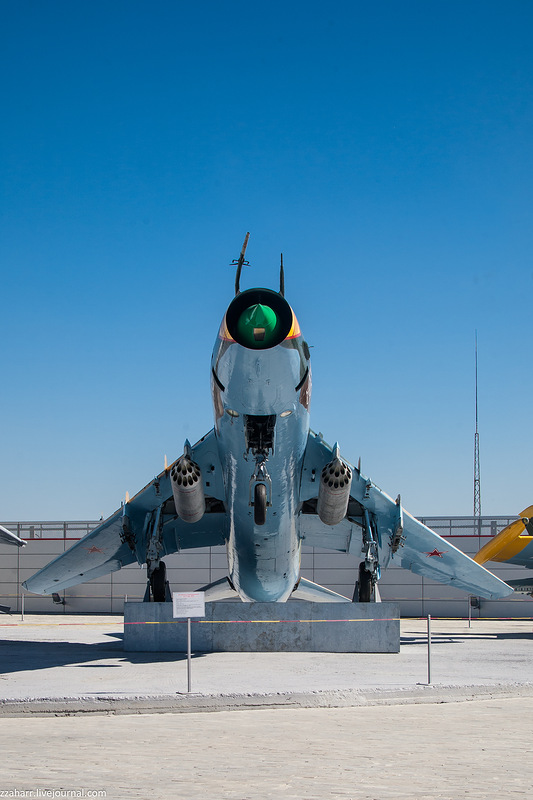
7. It turns out that some device is mounted in the nose cone cone (probably an aiming system) 
8. Additional air intakes in front of the cockpit
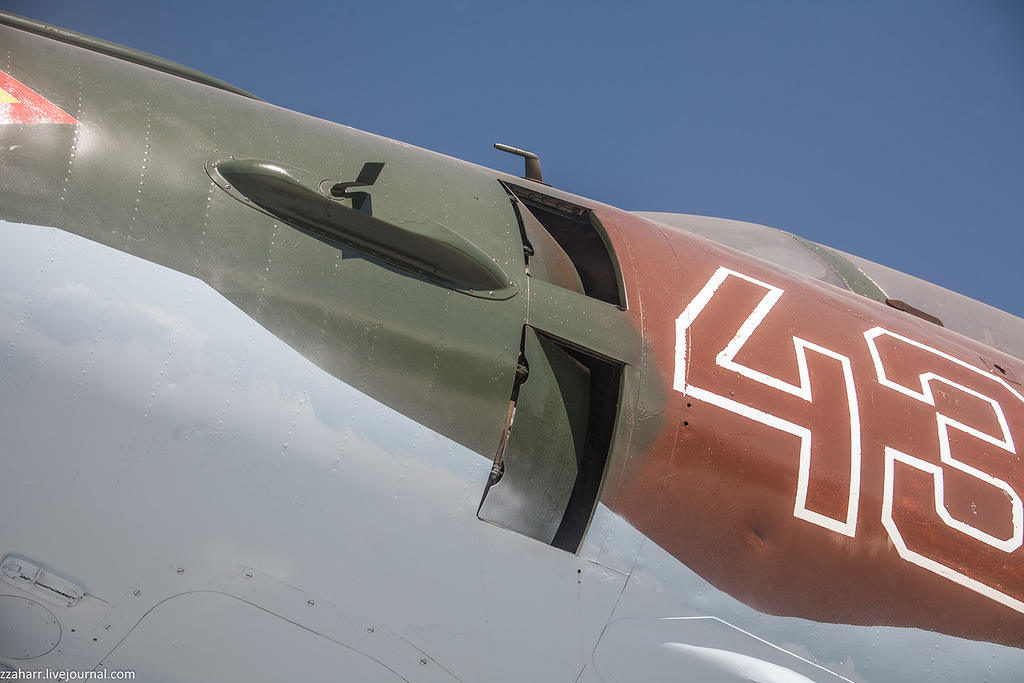
9. Beam holder BD3-USK-A 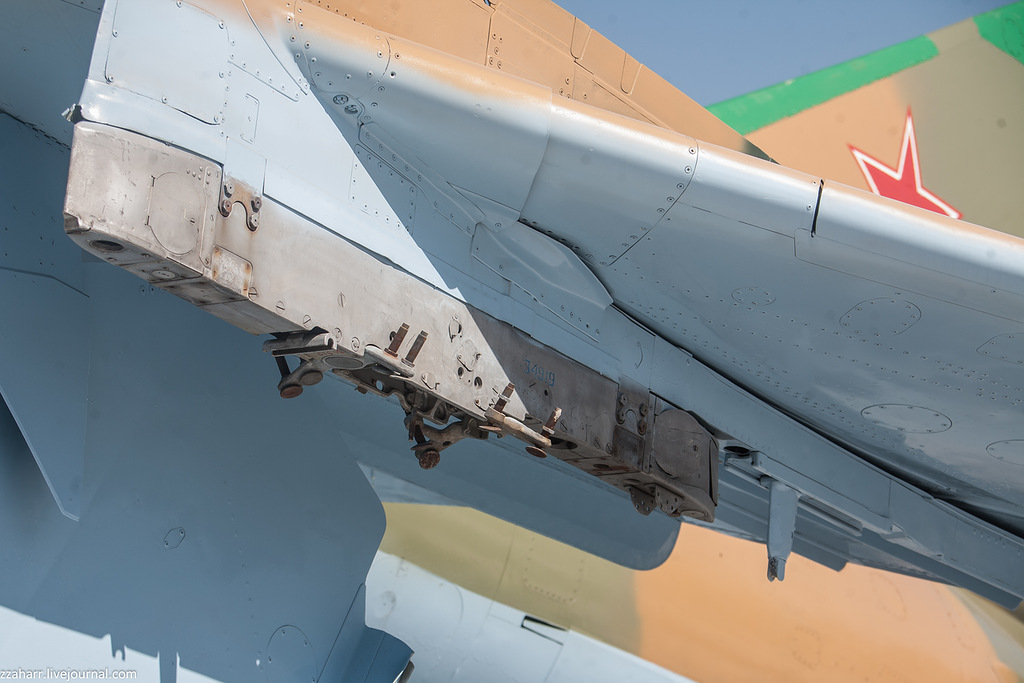
10. B8M1: a block of unguided aircraft missiles of caliber 80 mm. 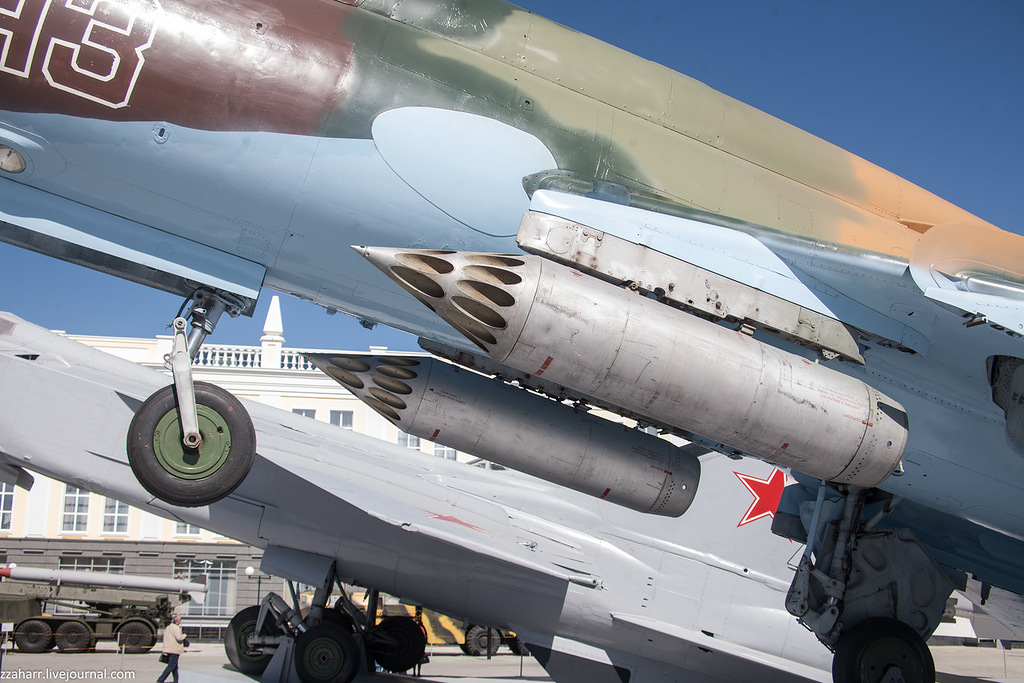
11. But what kind of mounts on the top of the fuselage, I still could not find out. Surely there are knowledgeable people who will explain what it is and why it is on a bomber. 
12. While preparing the material, I managed to read that the Su-17M4 is the last production modification. It was distinguished by a new digital sighting and navigation complex PrNK-54, unregulated air intake and an additional air intake in front of the keel for cooling avionics. It has been developed since March 1977. It was produced in 1978-1990; So isn't he in front of us? 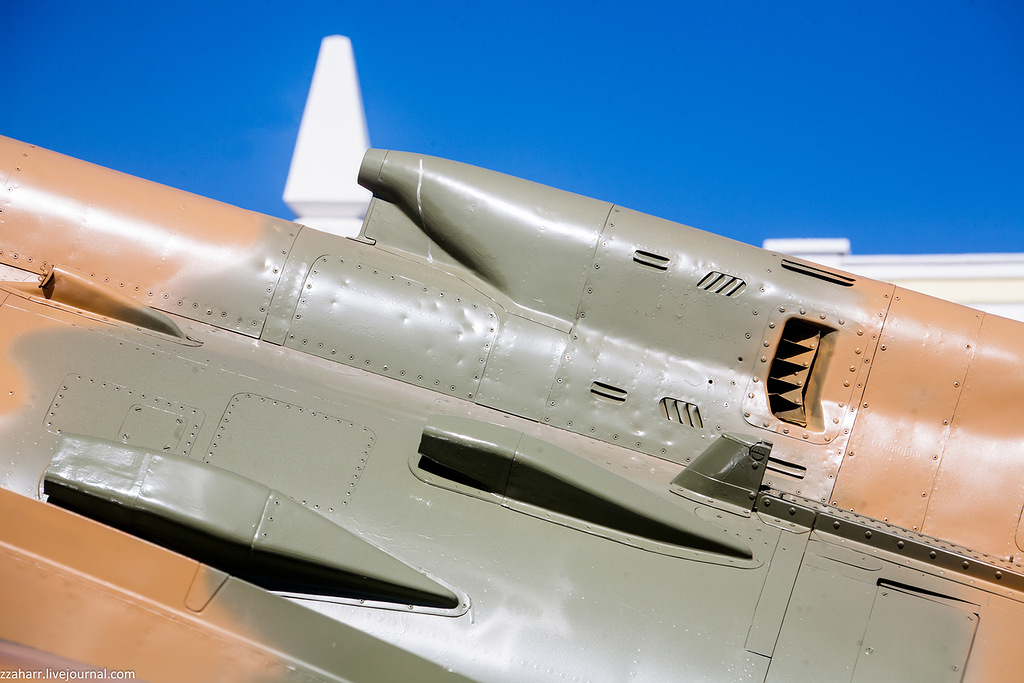
13. MiG-31 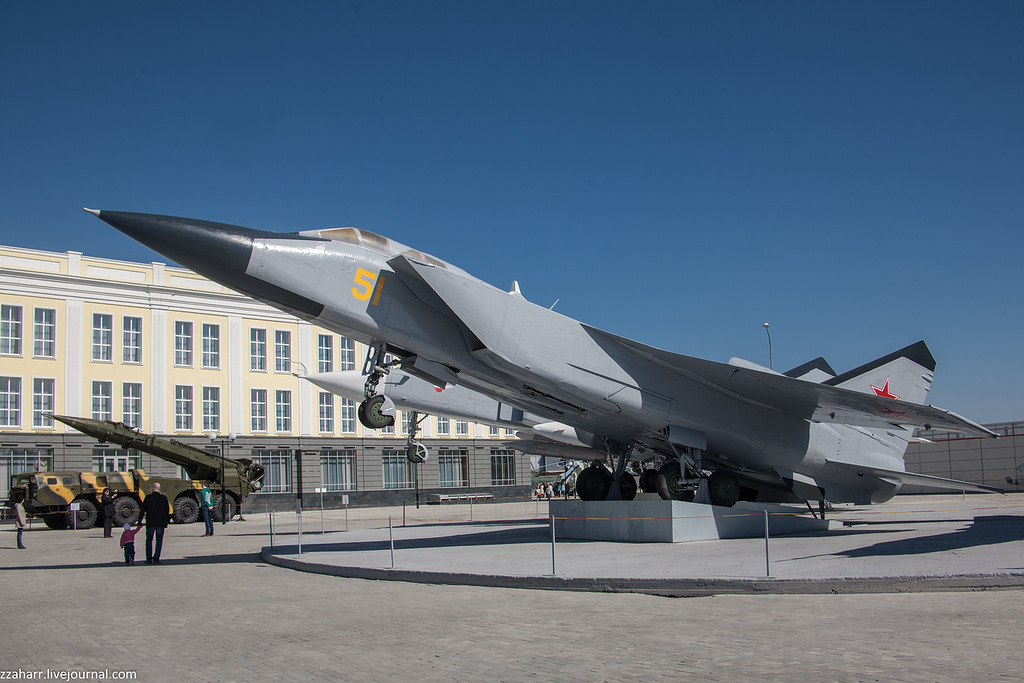
14. I never get tired of being amazed at the size of this fighter. 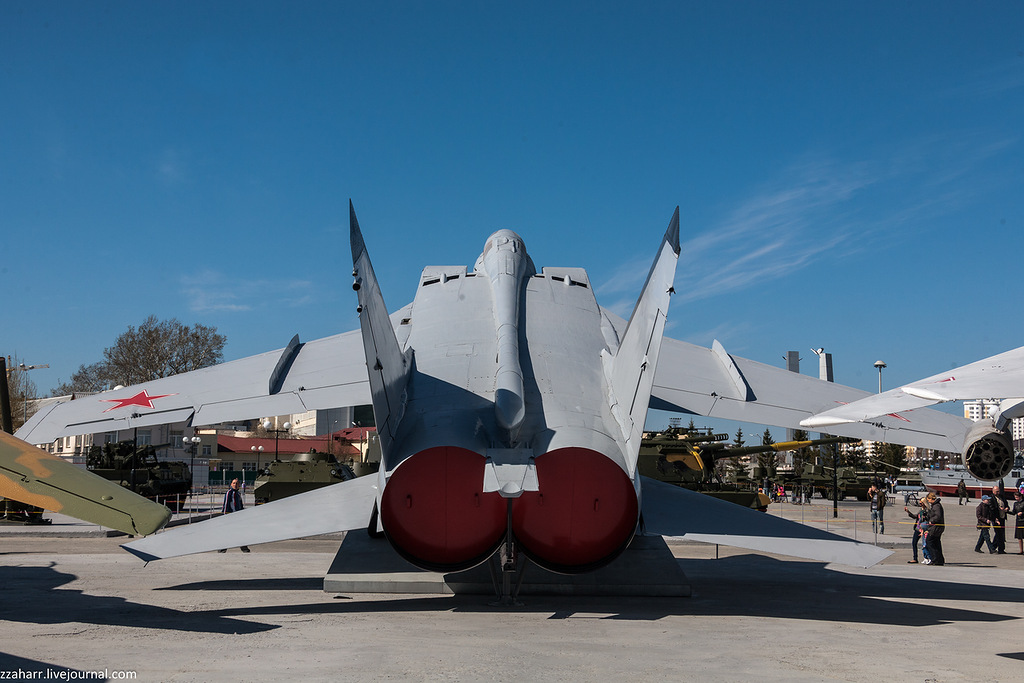
15. Some details are missing, but against the background of missing engines, this is a trifle. 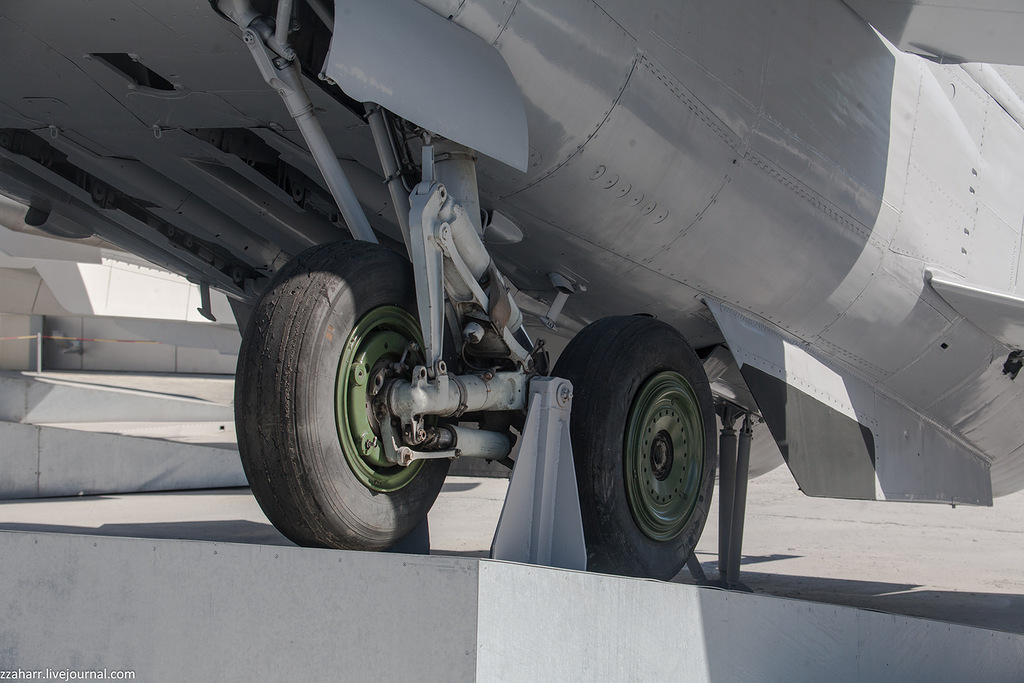
16. Su-24M 
17. Armed to the fullest. Only the bombs on the holders are missing. 
18.
19. B8M1 and? .. What is it, a PTB or some kind of container, and why do I need to take a check on it before flying? 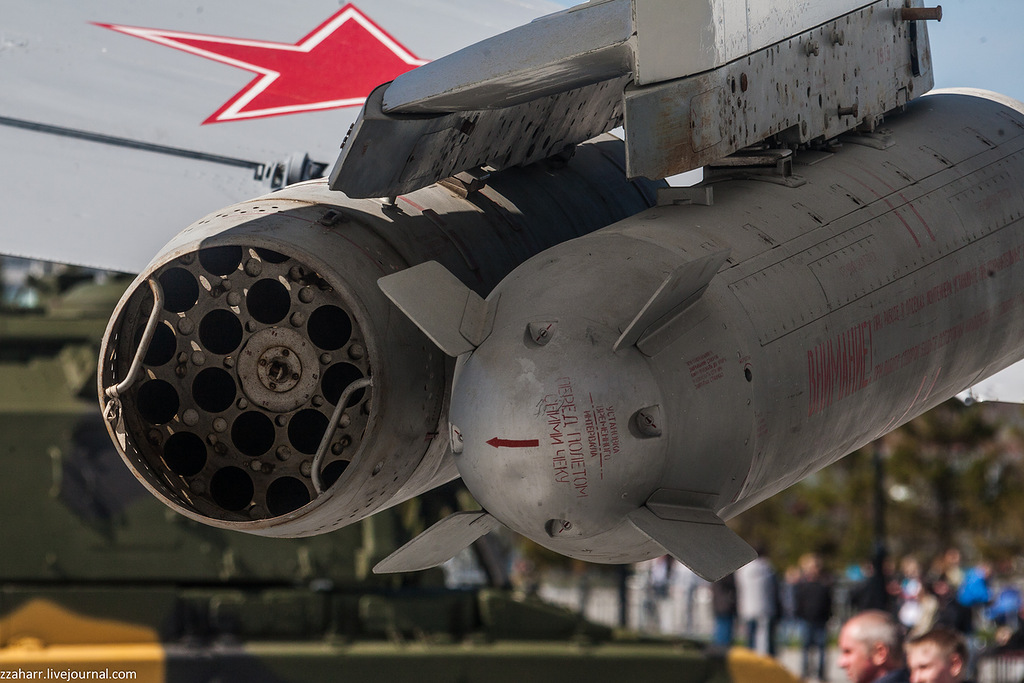
20. MiG-21PF. 
21. Judging by the gnawed tire, he didn’t stand idle on the ground at one time. 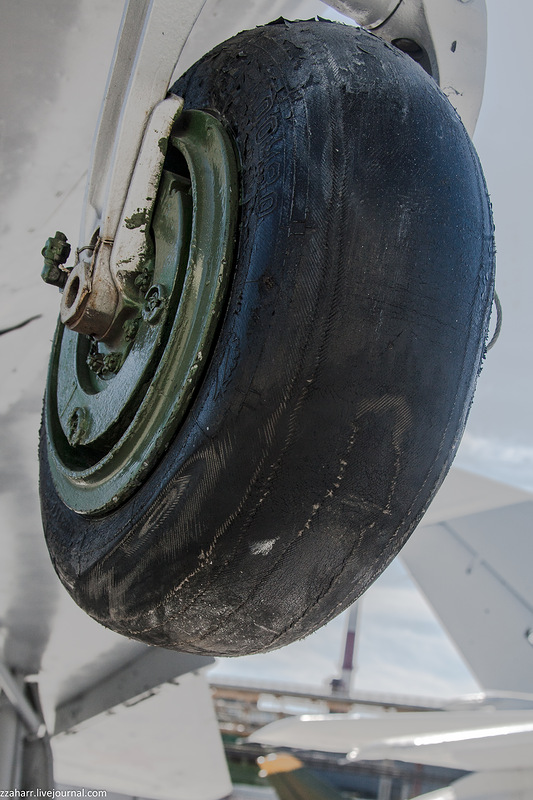
22. Mi-24D 
23. There is a USPU-24 with remote control, but a YakB-12.7 mm four-barreled machine gun with 1400 rounds of ammunition is not. 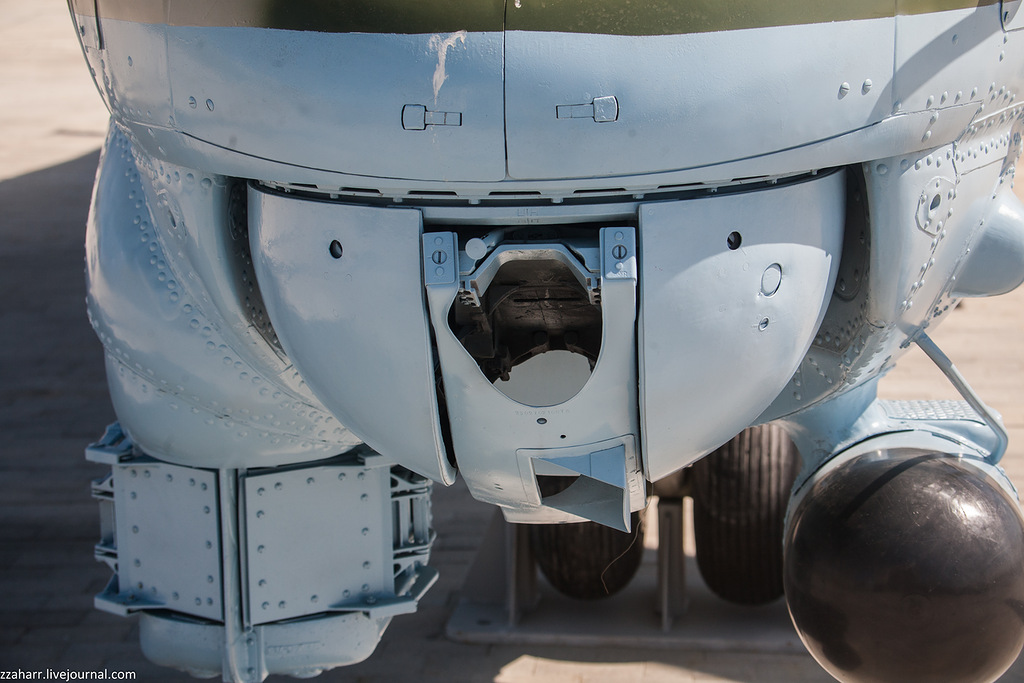
24.Mi-8T 
25.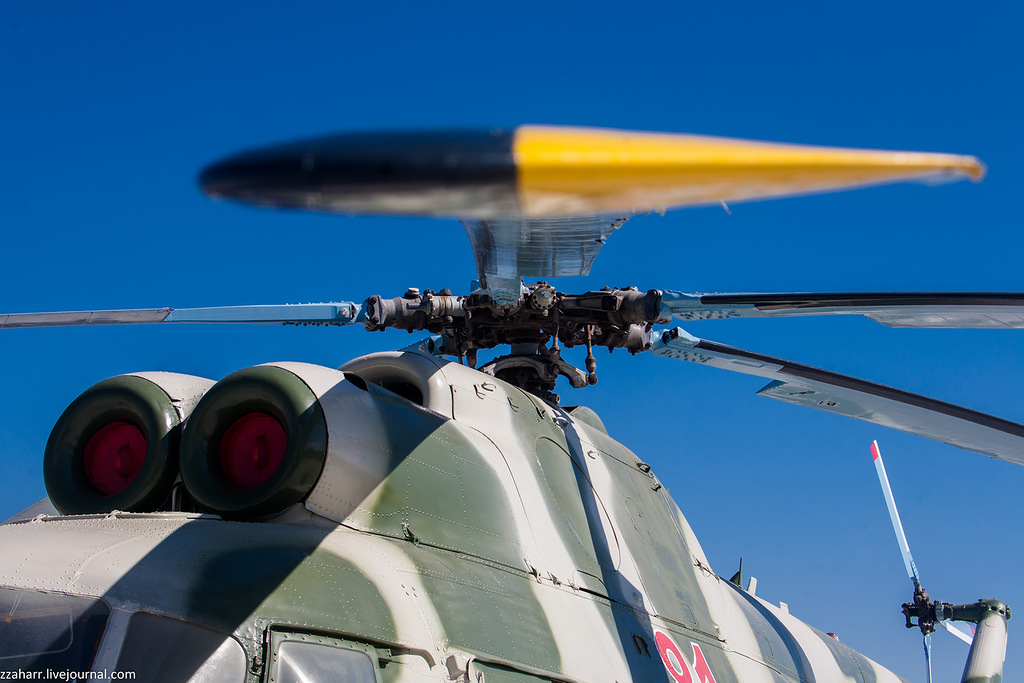
26. Mi-2 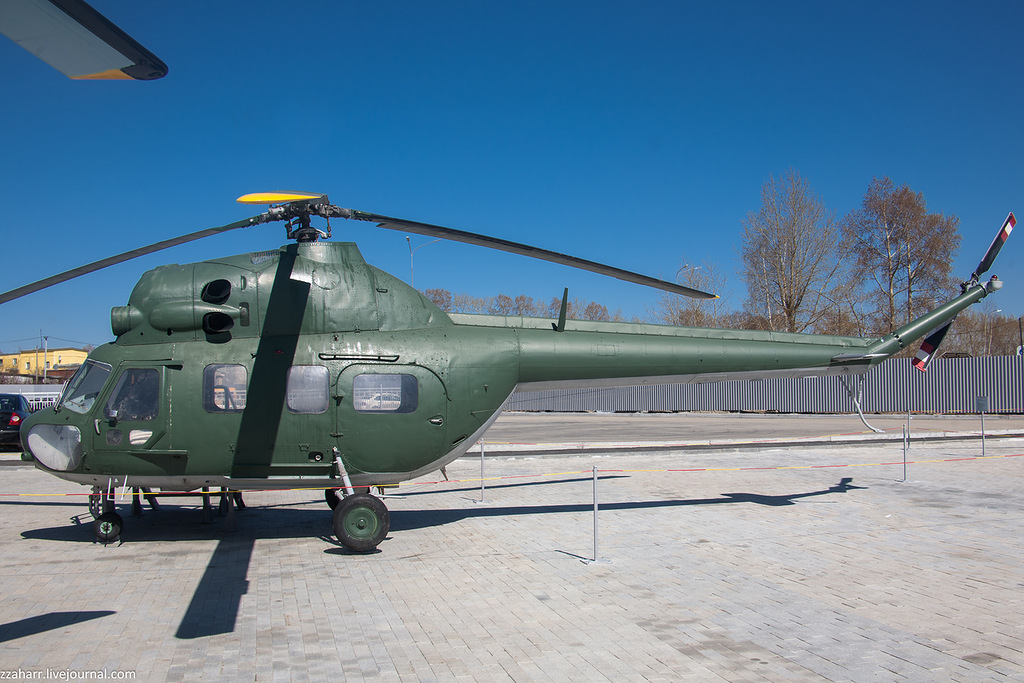
27.
28. Former owners were not very greedy, so the cabin and instrument panel are almost complete 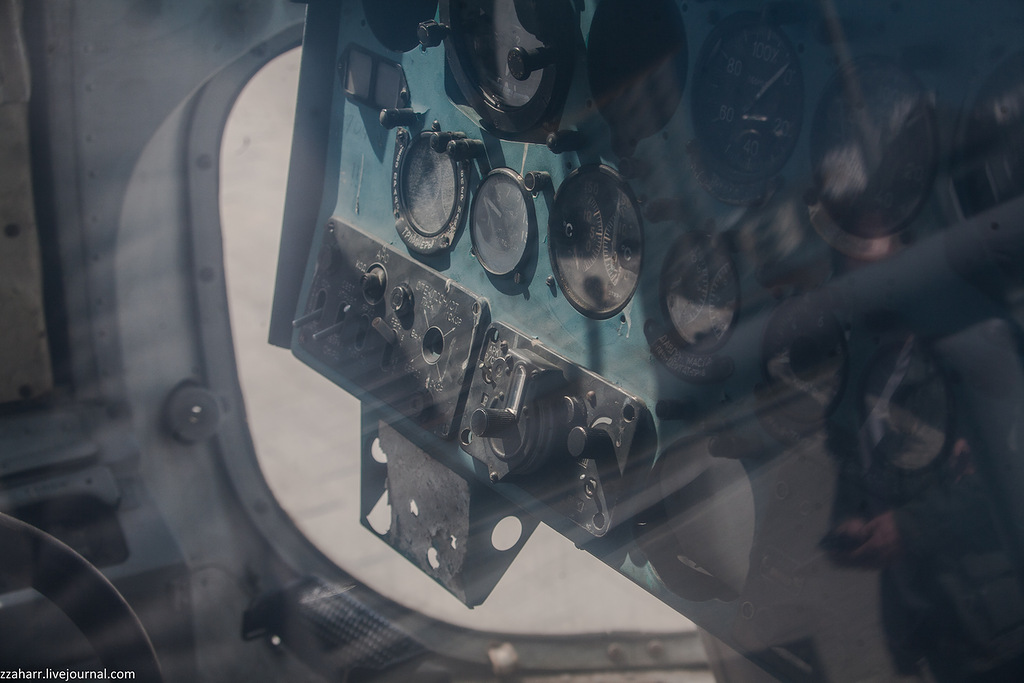
29. And now I invite you to continue the tour to the indoor pavilion. My first word when I got inside myself was "wow!" 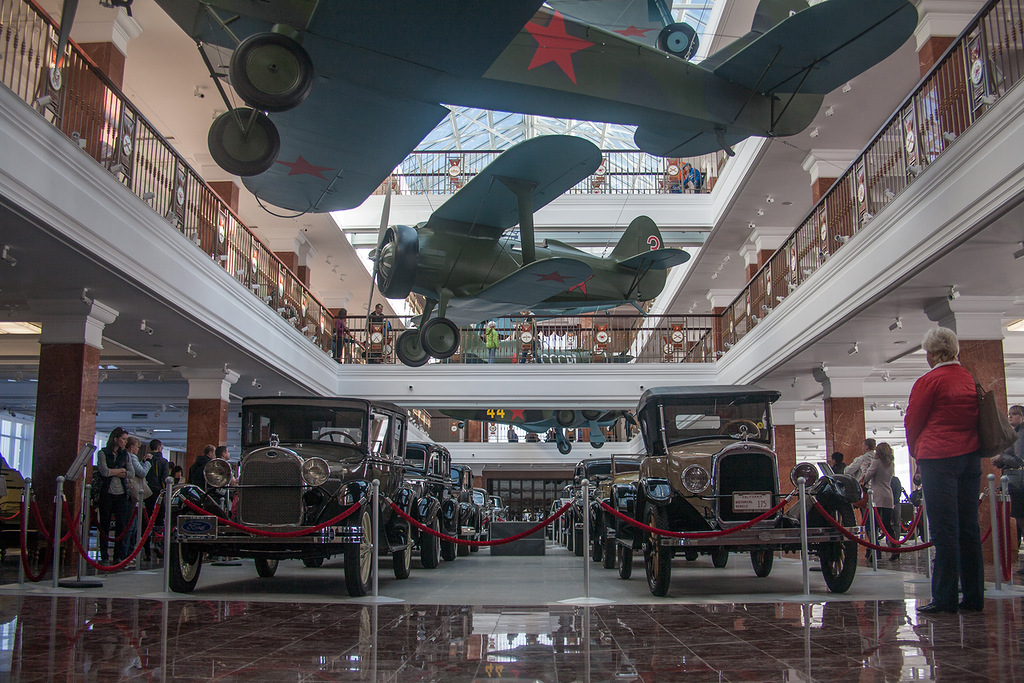
30. I’ll tell you about cars the next time, but for the time being about airplanes. The initial delight subsided when I realized that these were not even replicas, but layouts. Albeit full-sized, but layouts.
In the foreground LaGG-3 
31.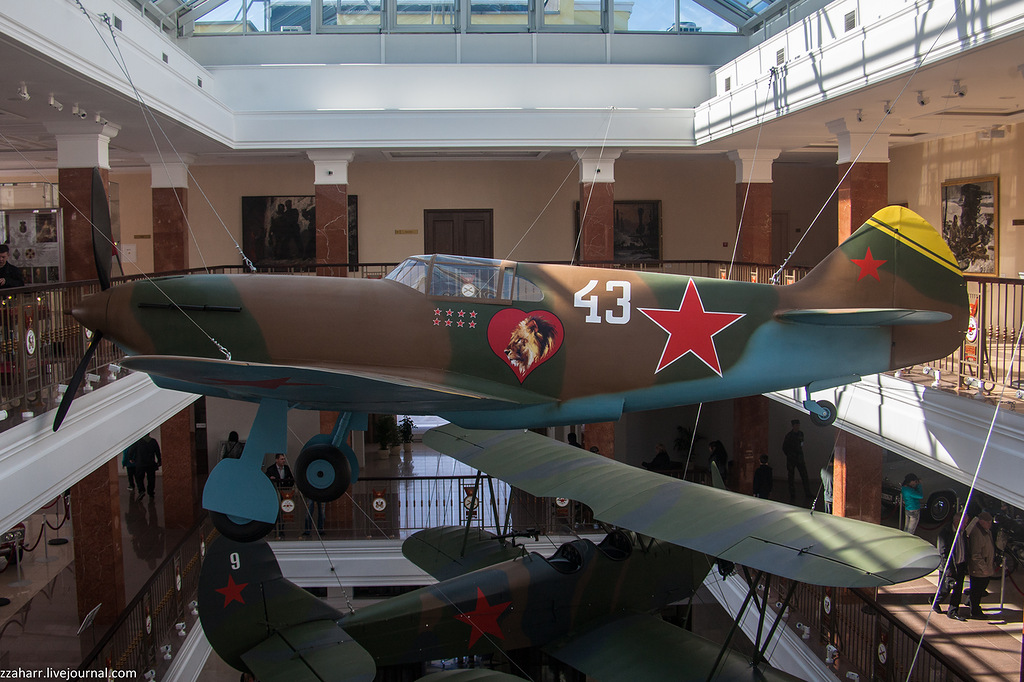
32. I-15 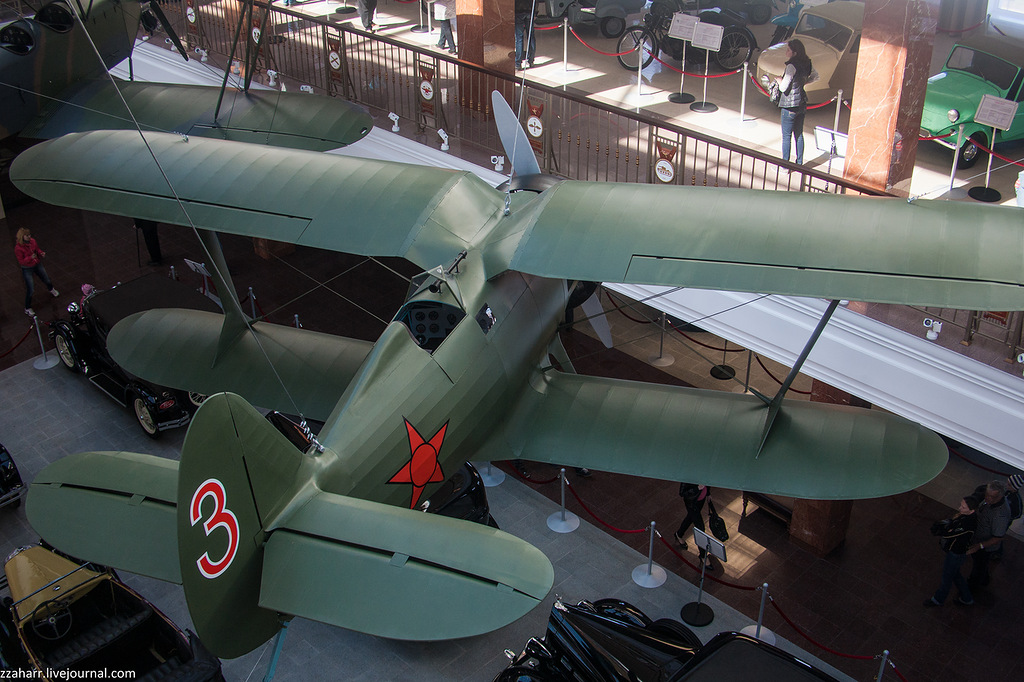
33. In the cockpit, an imitation of a dashboard with illuminated instruments. 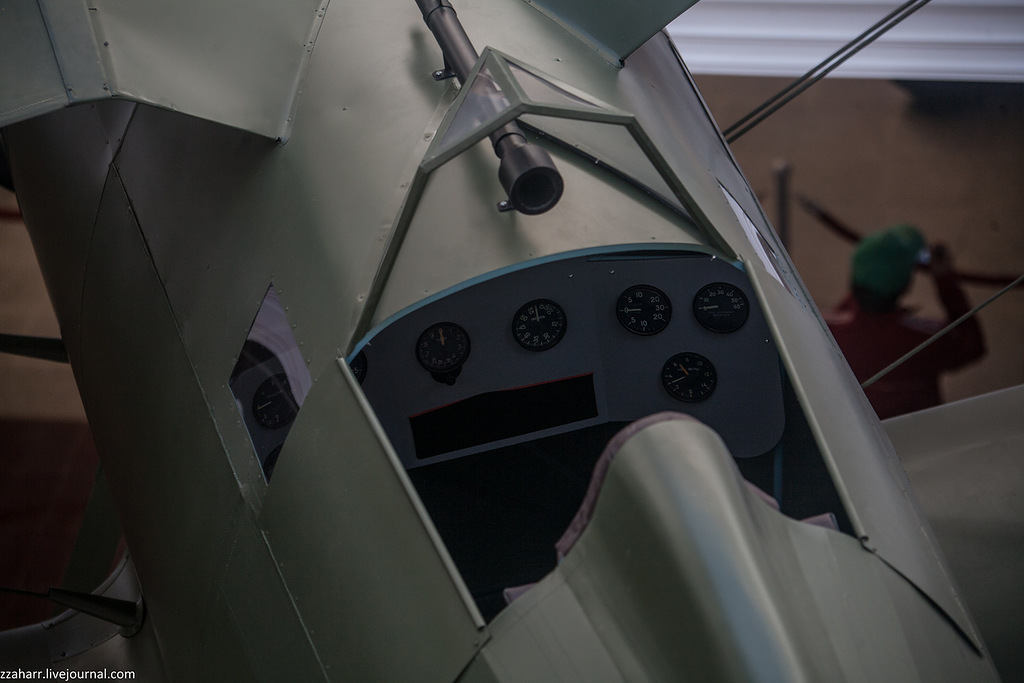
34. I-16 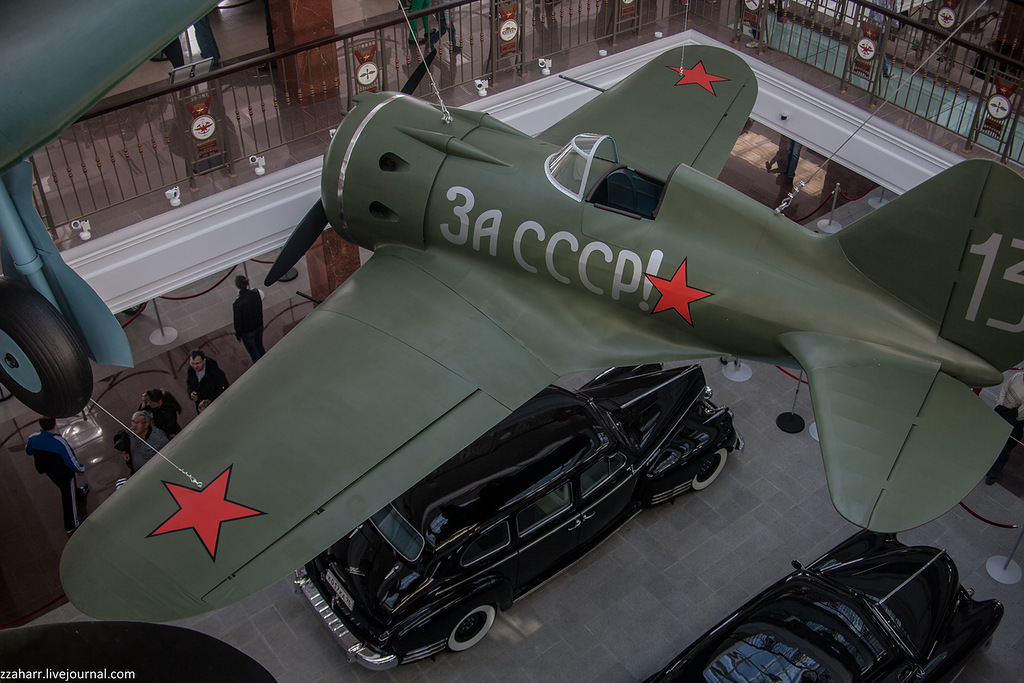
35.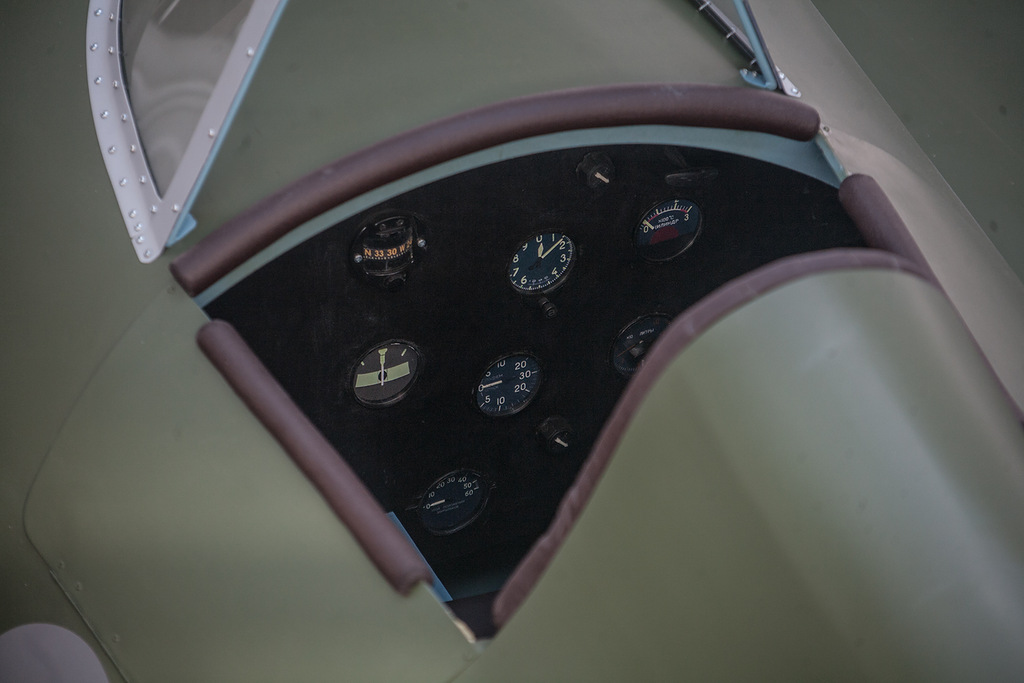
36. MiG-3 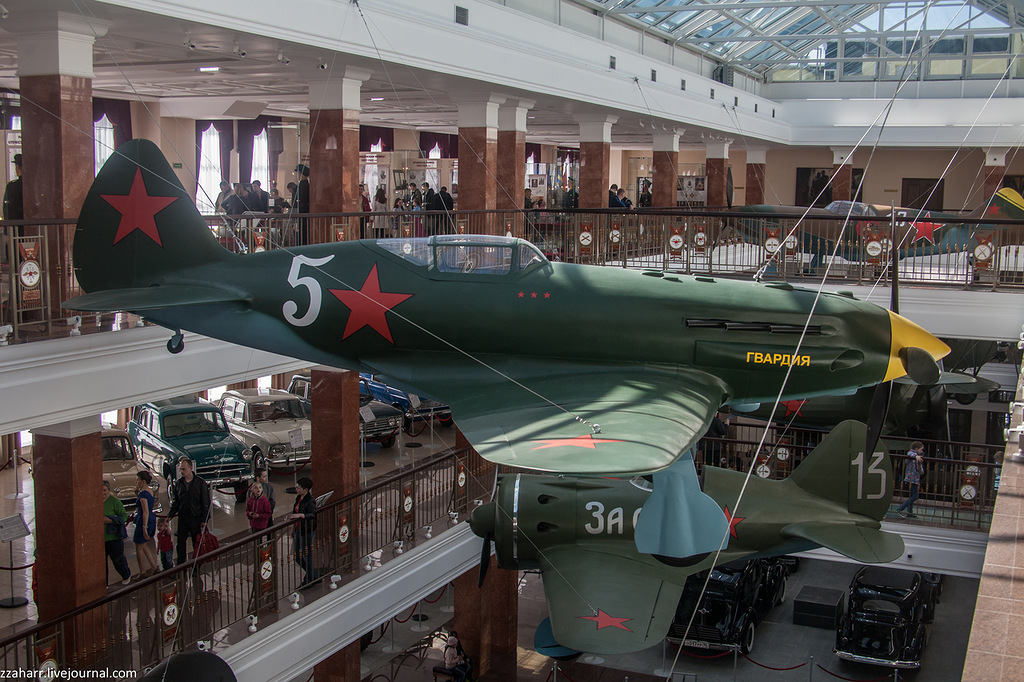
37.
38. Po-2 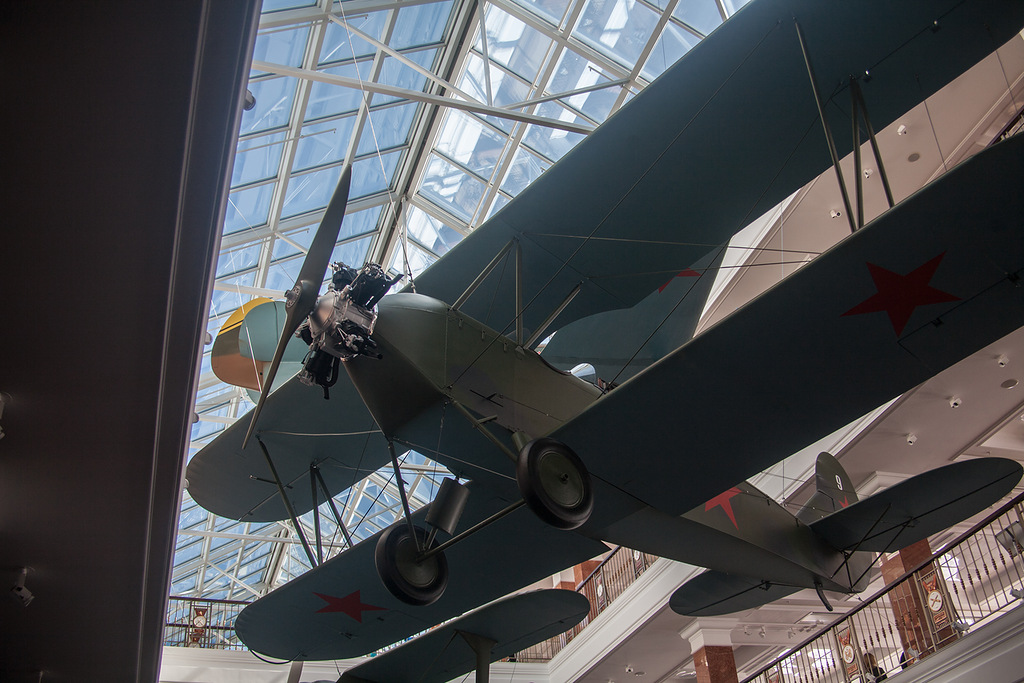
39.
40.
And now the auto-moto part of the museum
The first floor is dedicated to cars of the prewar and military eras. Visitors are greeted by a pair of "Fords" torn to a mirror shine.
1. Ford Star F 1925. Made at the Canadian plant of the company in the back of a roadster. 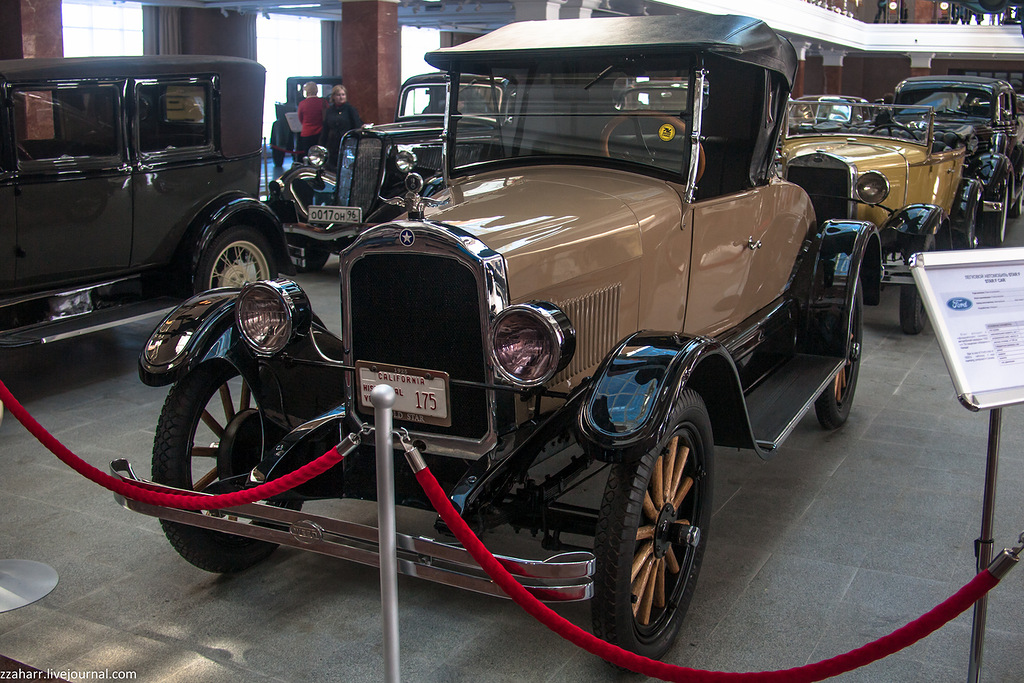
2.
3. His American brother Ford A. 
4.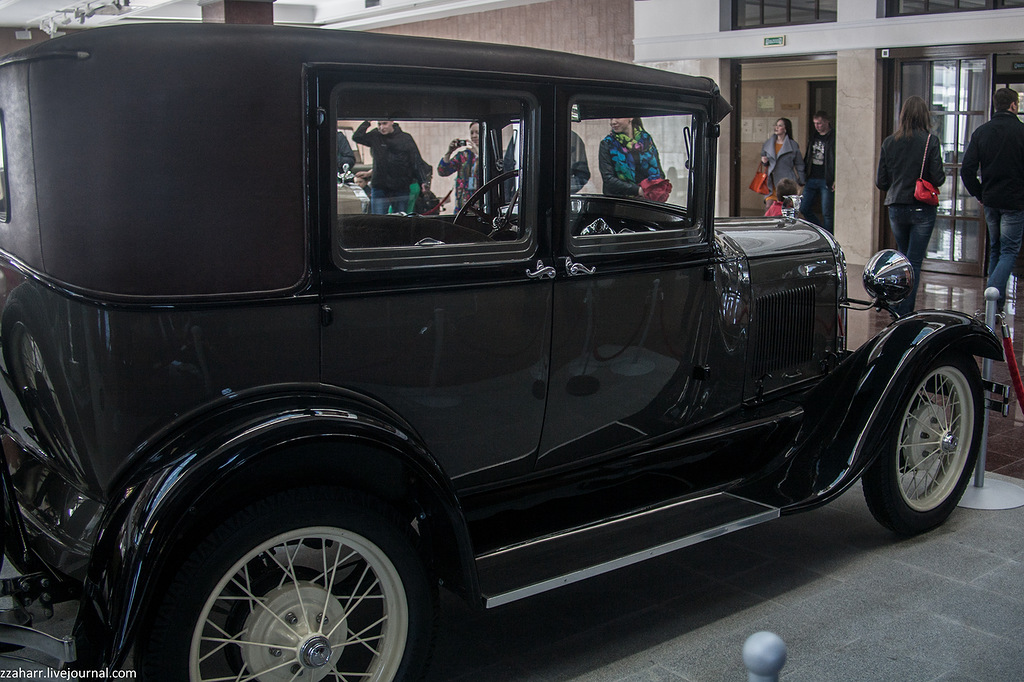
5.
6. Another Ford A, but already in the back of a Phaeton 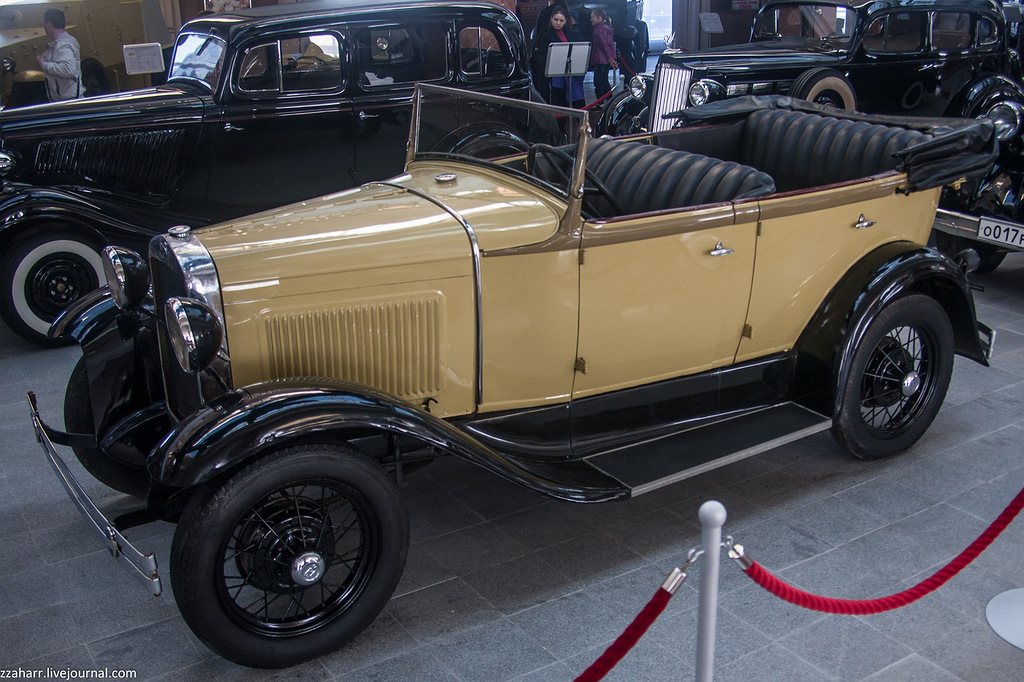
7. Dashboard - holy simplicity. 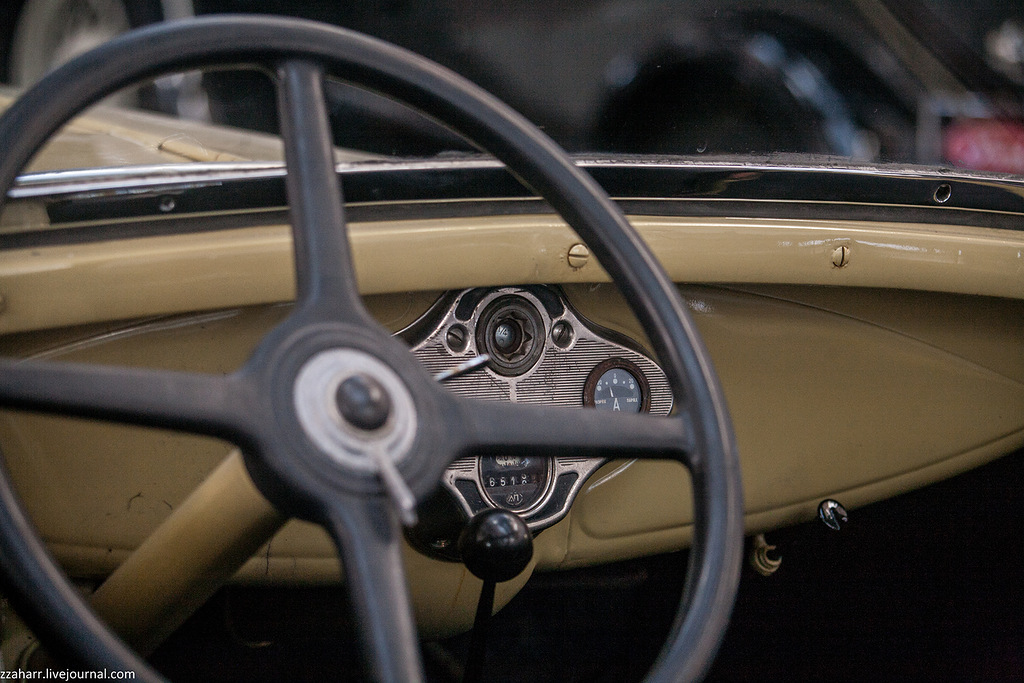
8. GAZ M-1 
9. ZIS-101A of 1939. 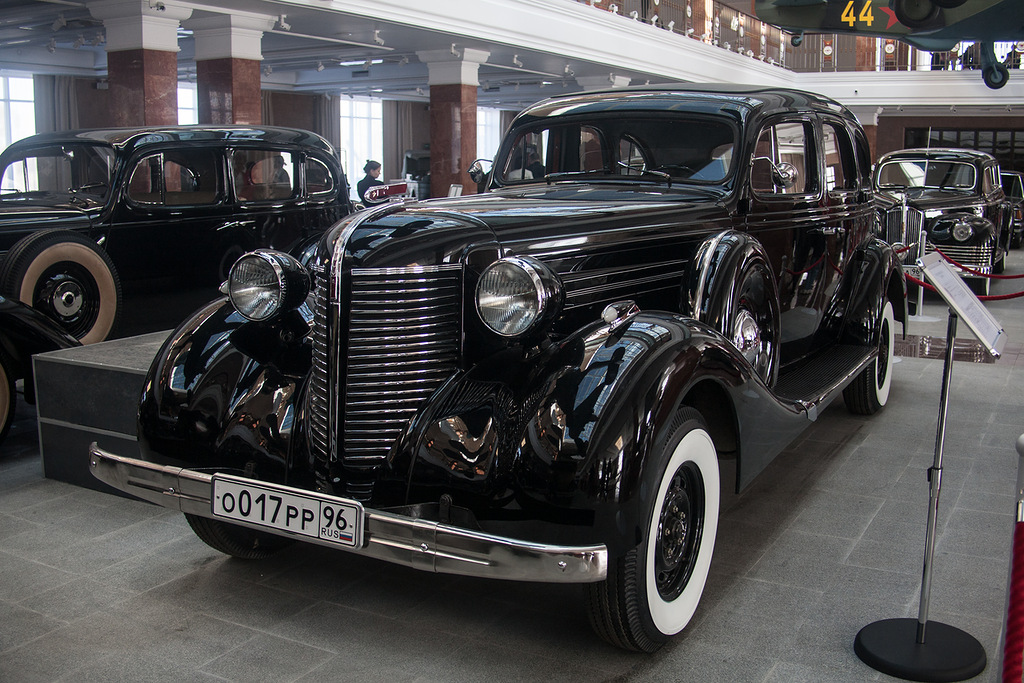
10.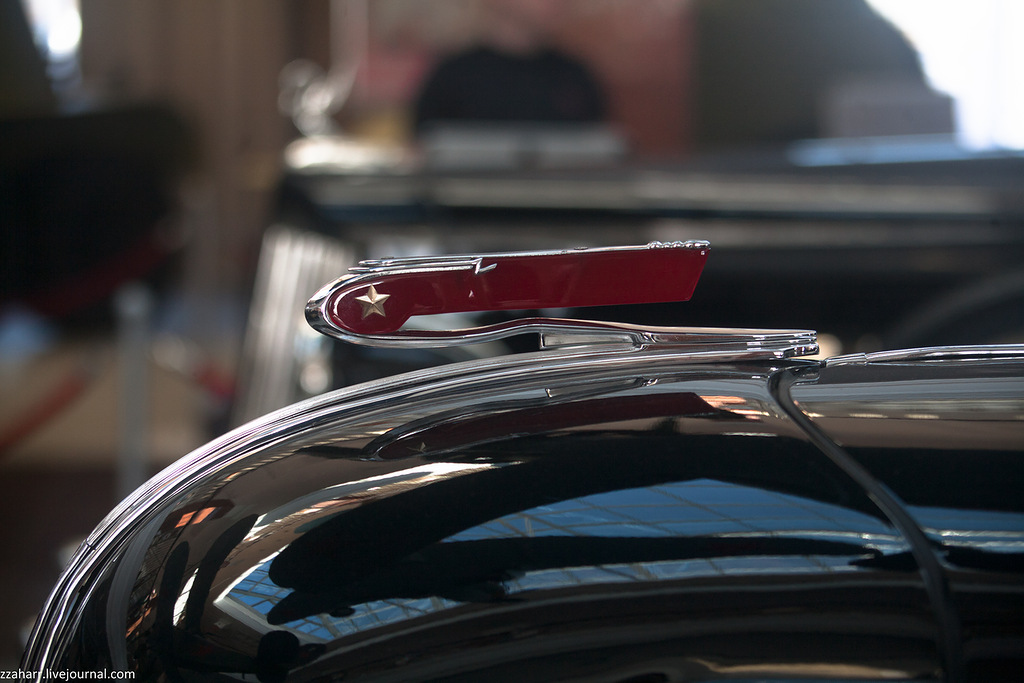
11. ZIS-110 
12.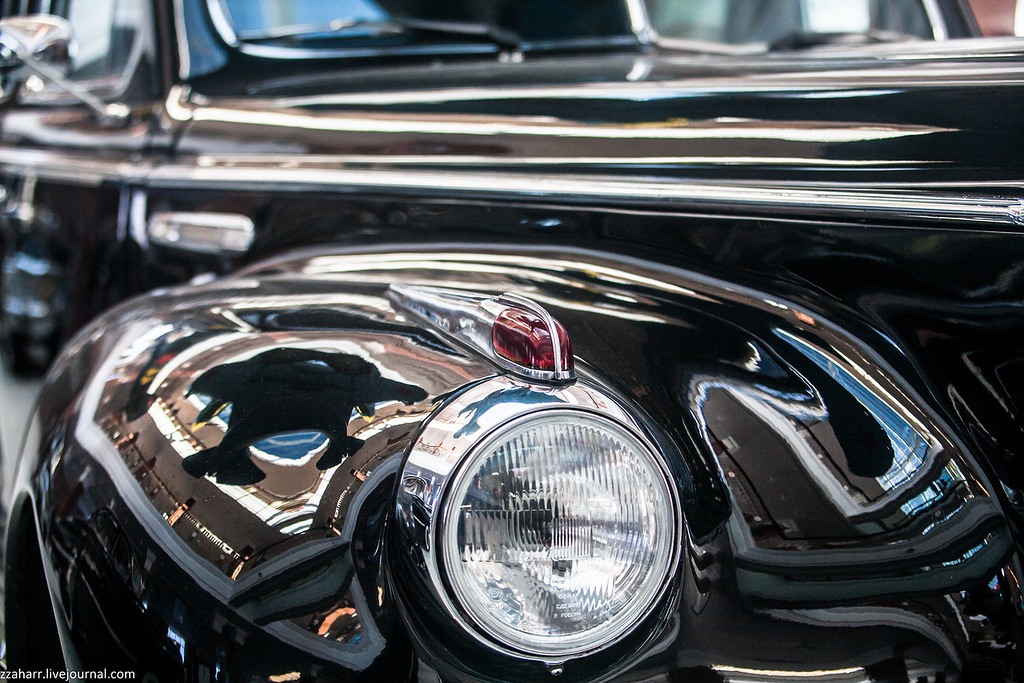
13. Packard Super Eght. 1937-1951. Limited quantities supplied to the Soviet Union. Total released 5793 copies. 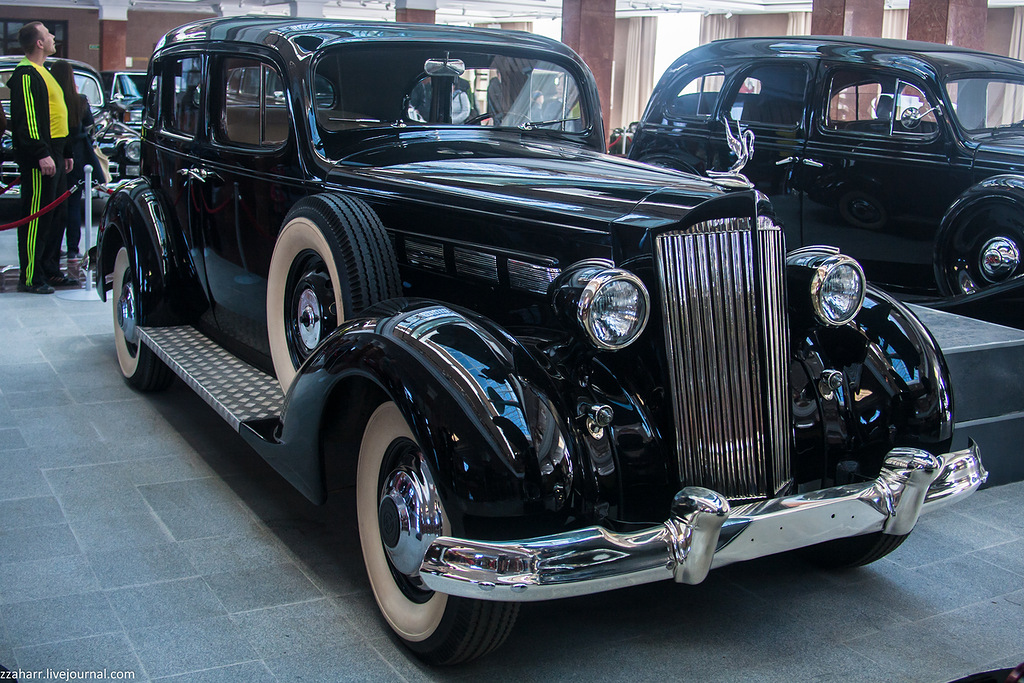
14.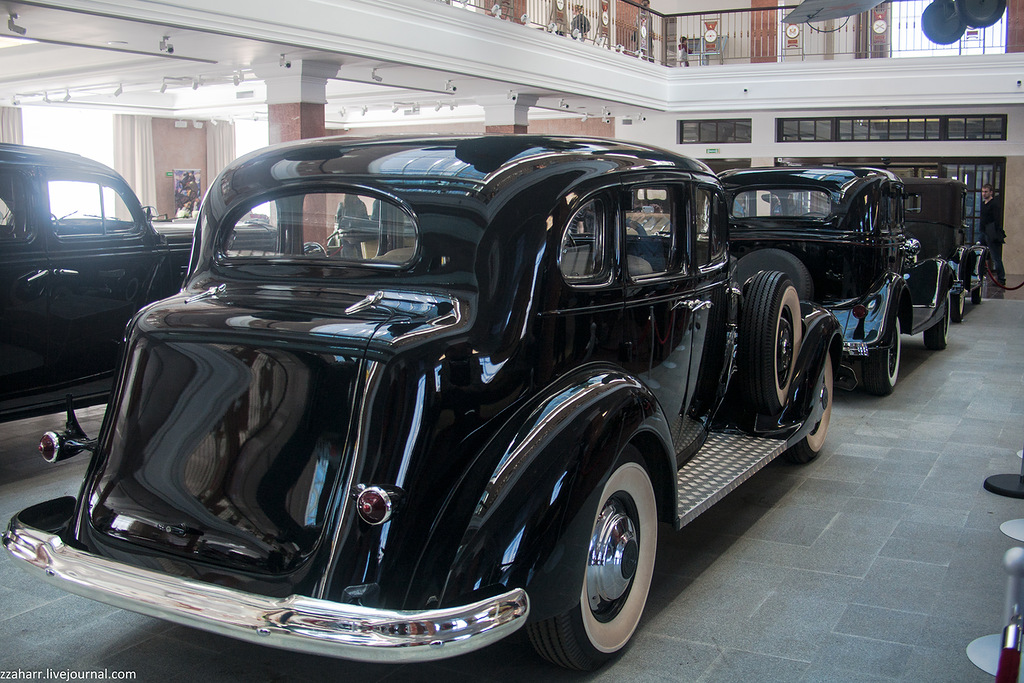
15.
16. "ZIM" GAZ-12 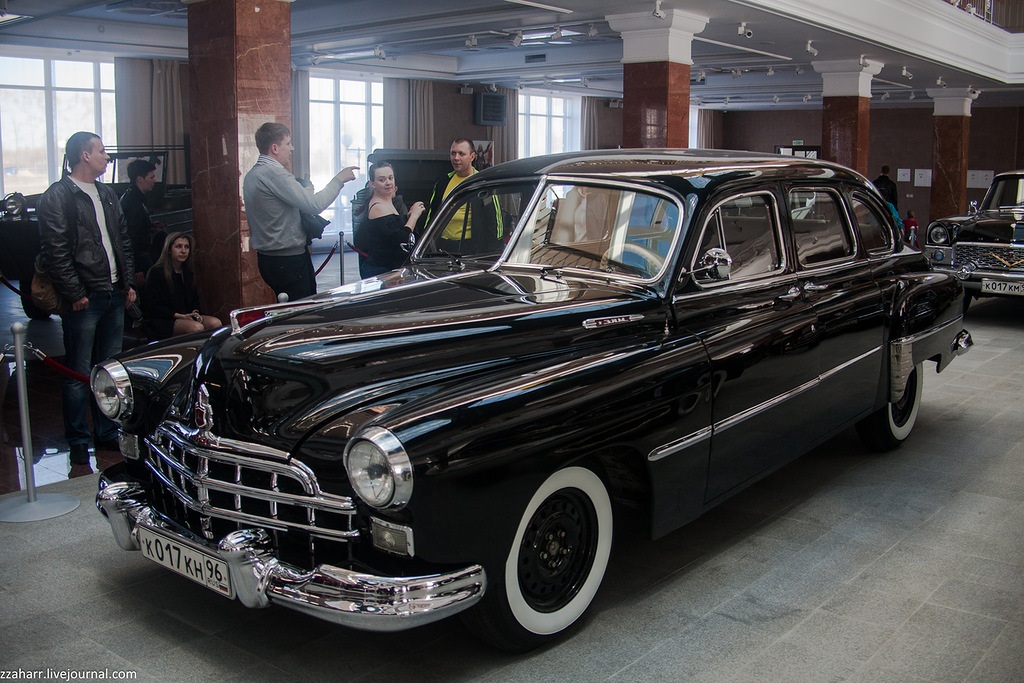
17. We pass to the second floor, consisting of two galleries. Let's start with the east. 
18.GAZ-24-02 
19. To be honest, I first saw the Volga with the third row of seats in the trunk spread out. 
20. What is wrong with this photo? 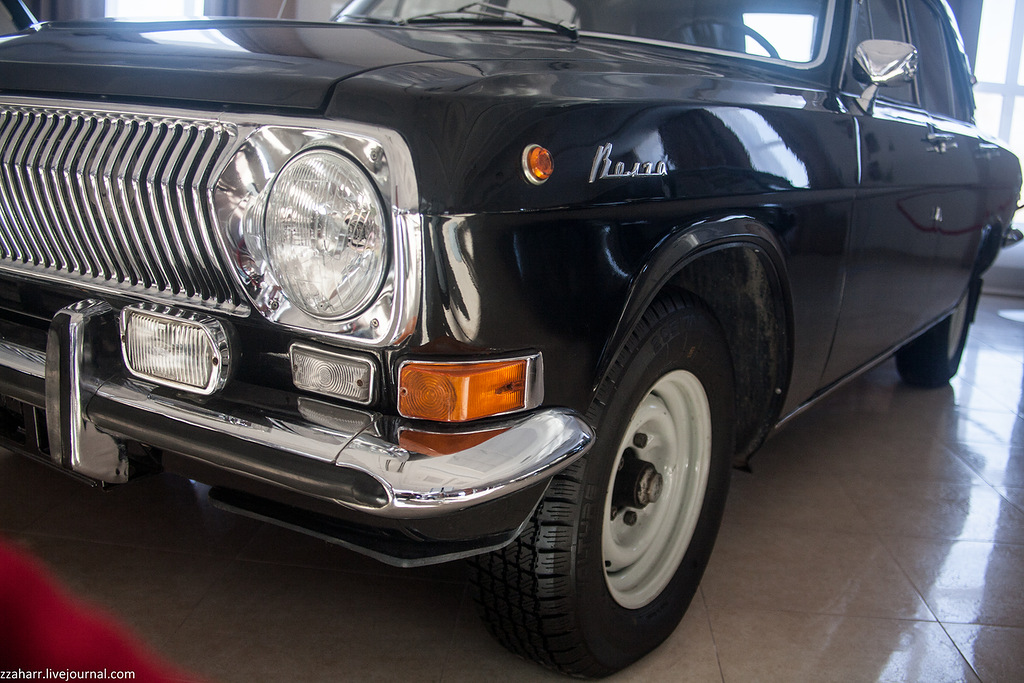
21. GAZ-M-21, later (since 1965) - GAZ-21 
22.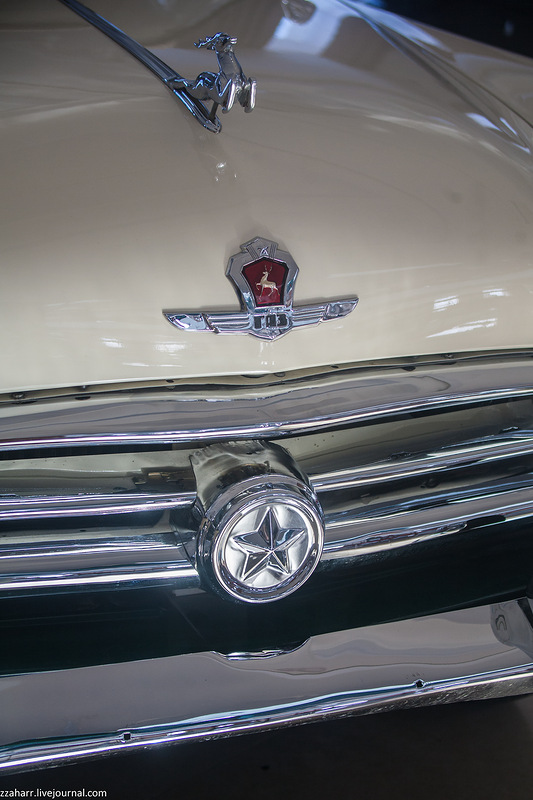
23. GAZ-M-20 “Victory” 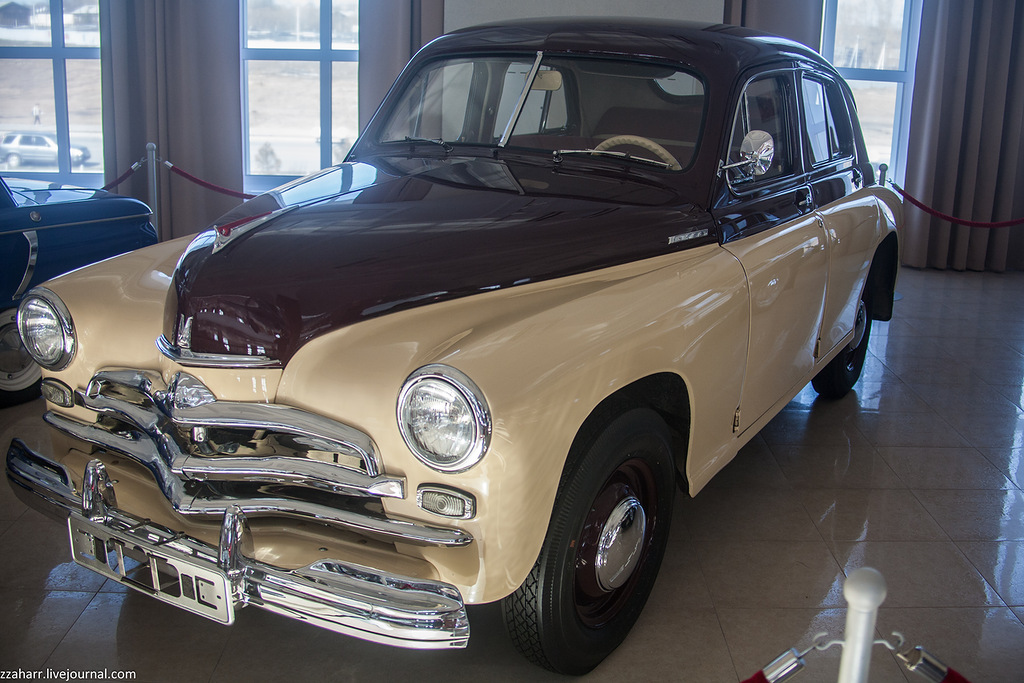
24. SMZ S-3D "Invalidka" 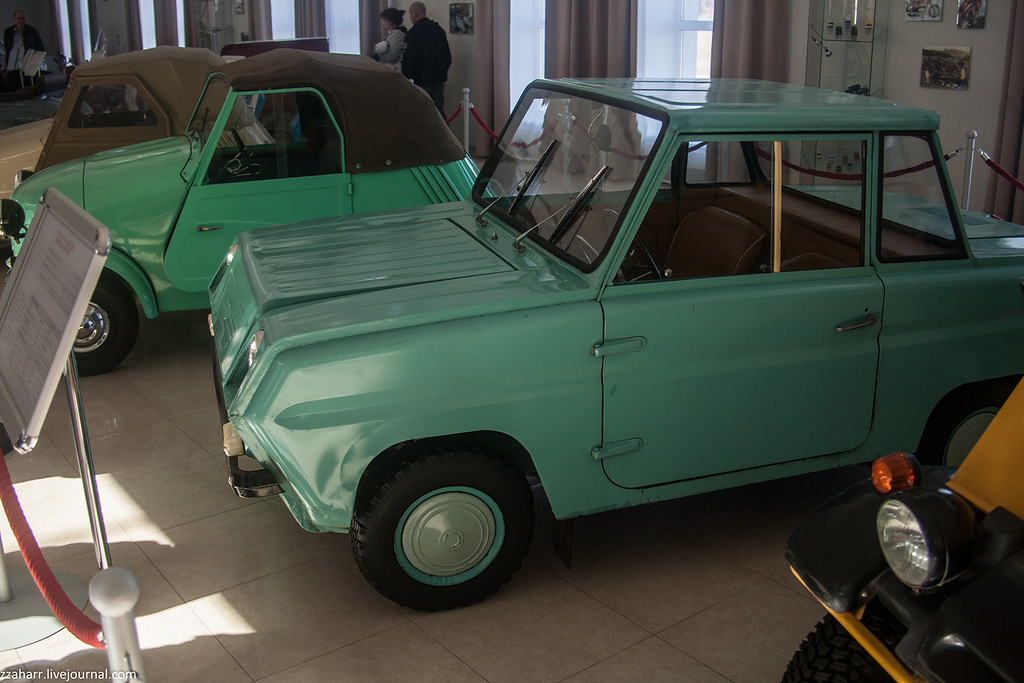
25. SMZ S-3A - serially produced by the Serpukhov Motorcycle Plant from 1958 to 1970. 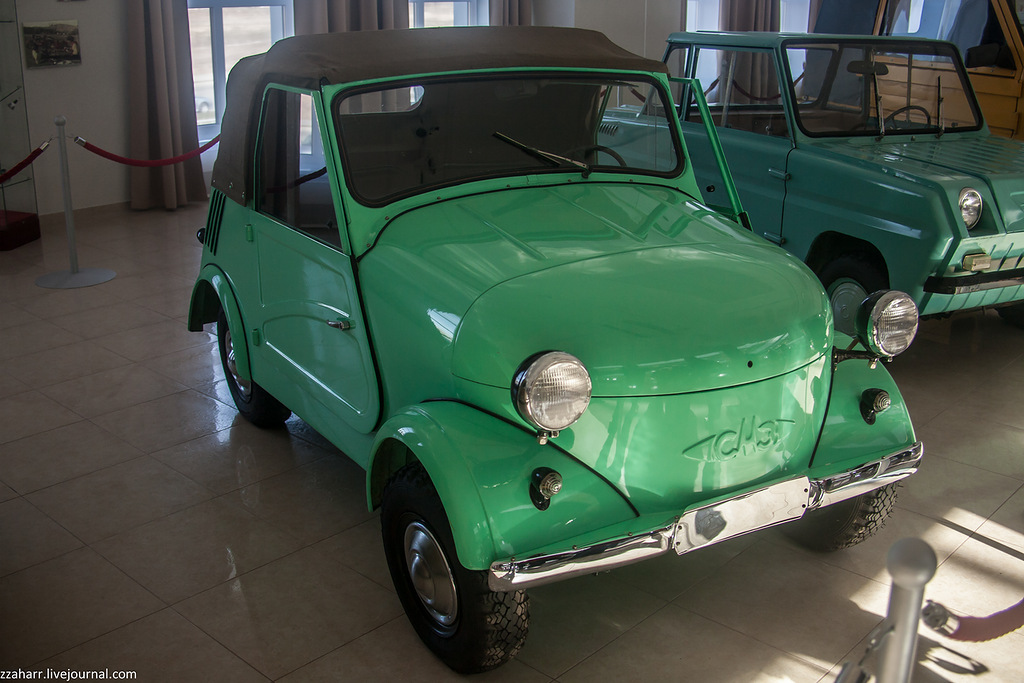
26. SMZ S-1L is a two-wheeled three-wheeled motor-car, manufactured by the Serpukhov Motorcycle Plant from 1952 to 1956. In 1956-1958, the S-3L modification was produced, which differed from the base one with a more powerful engine. A total of 19,128 S-1L strollers and 17,053 S-3L strollers were manufactured. 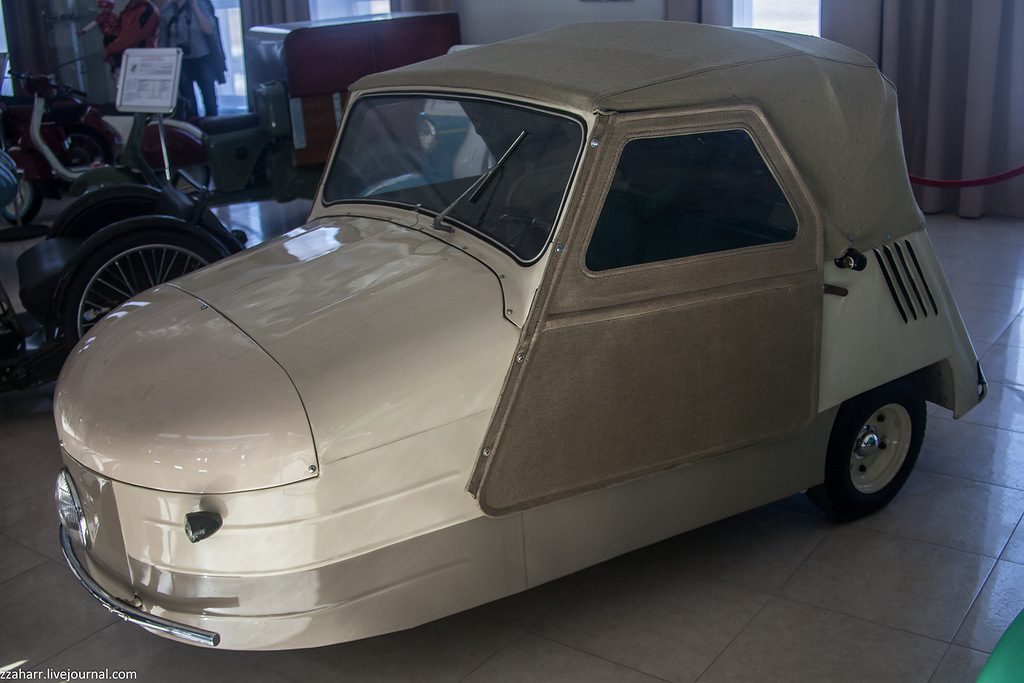
27. We pass to the western gallery. In the foreground Moskvich-400. 
28. "Moskvich-400-420K" experimental sample. They say it is preserved in a single copy. 
29. Moskvich-400-420A (1949-1954) - four-door convertible (body with an open top, but retaining the sides and door frames with glass). 
30. Moskvich 408. The most expensive car to my heart at the exhibition. 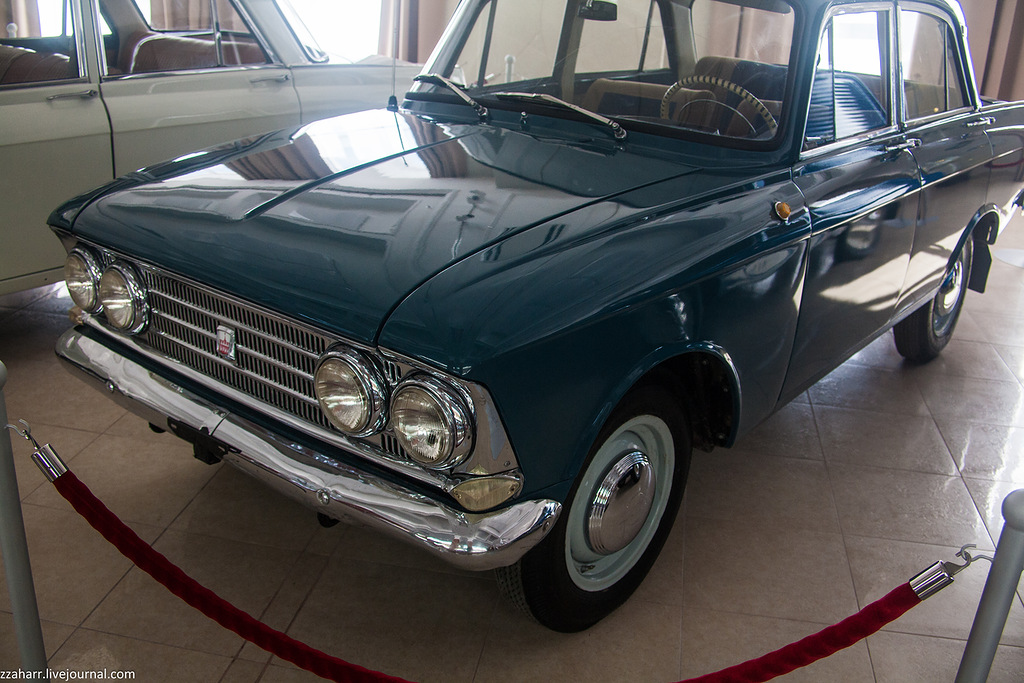
31.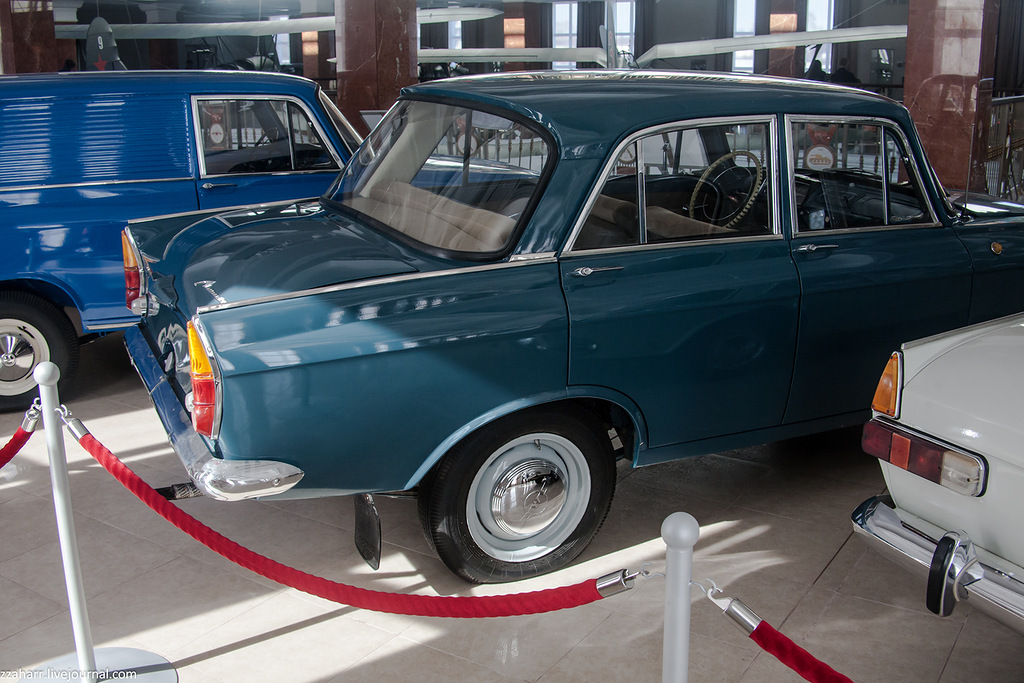
32.
33. Moskvich-2734 van based on AZLK 2140. Produced in 1976-1983. 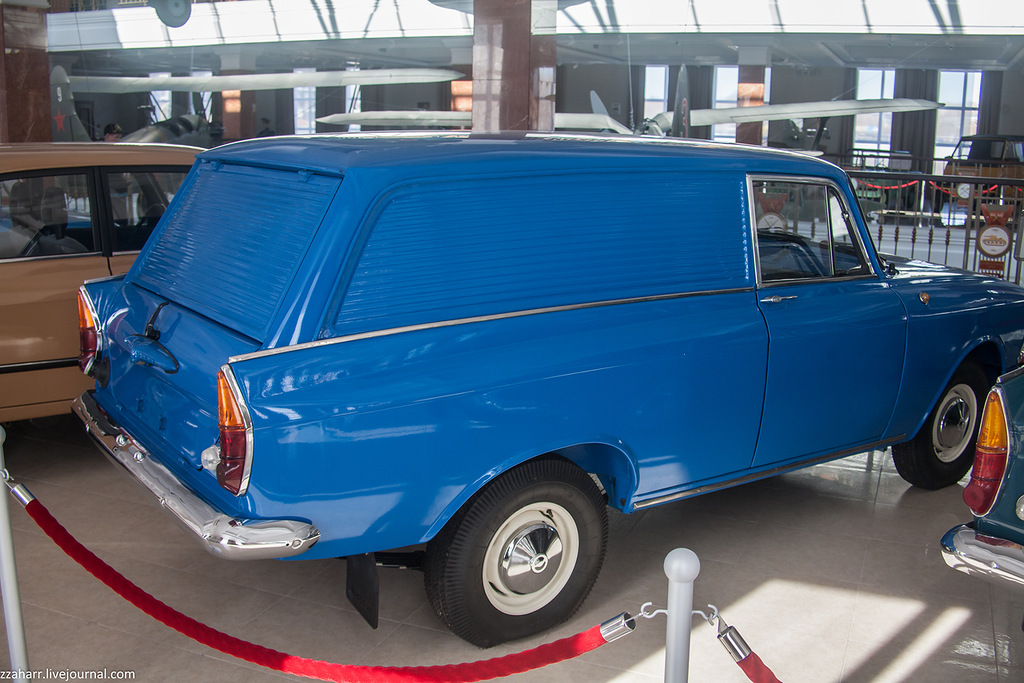
35. It is better to go back to the east wing and consider a few more rare vehicles.
KMZ K-1V is the first Soviet motorized tricycle, single-seat, manufactured by the Kiev Motorcycle Plant from 1947 to 1951. 
36. Motor rickshaw based on the Vyatka VP-150 scooter. 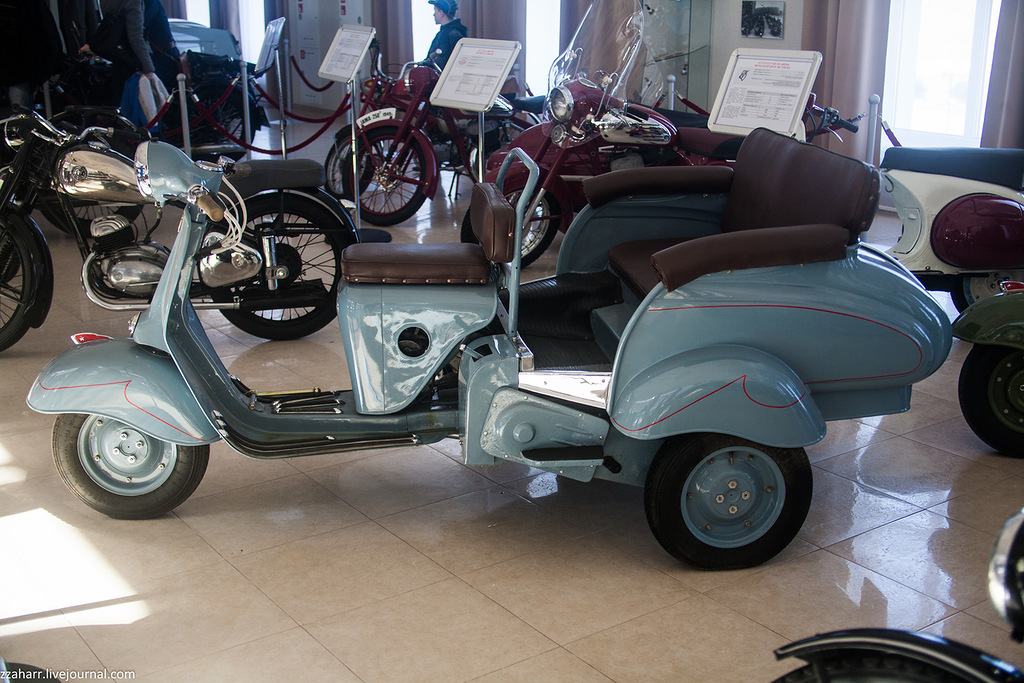
37. Motorcycle Jawa CZ Sonstige 150 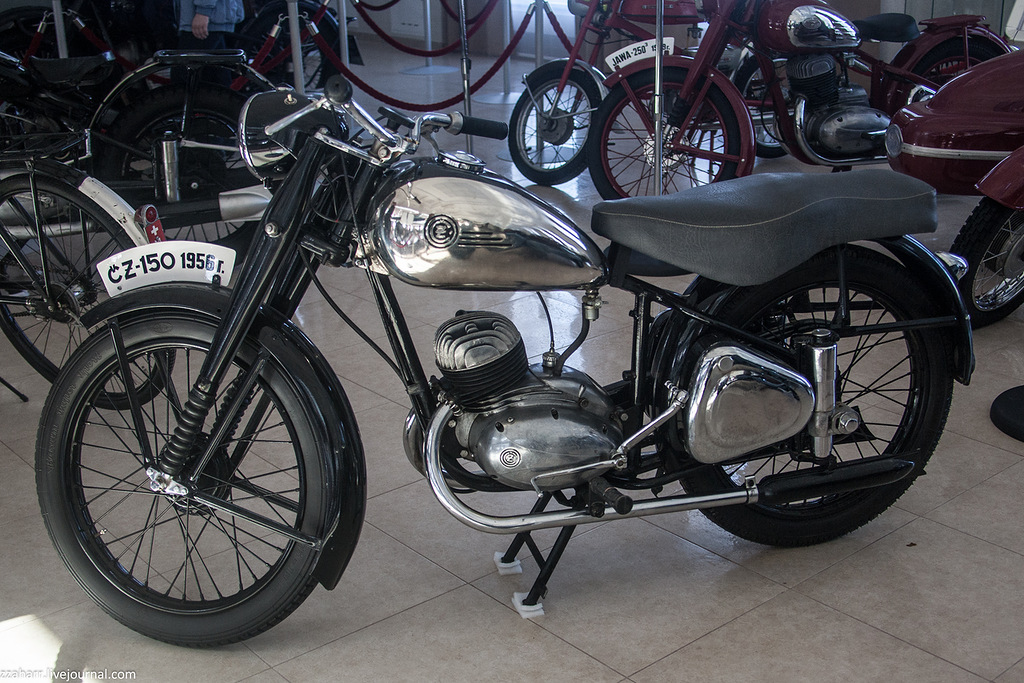
38.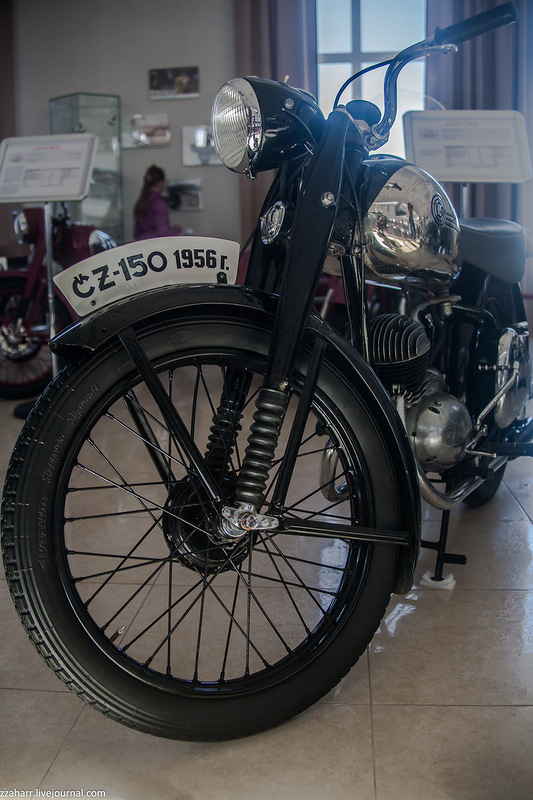
39. Jawa 350 motorcycle with a stroller Velorex 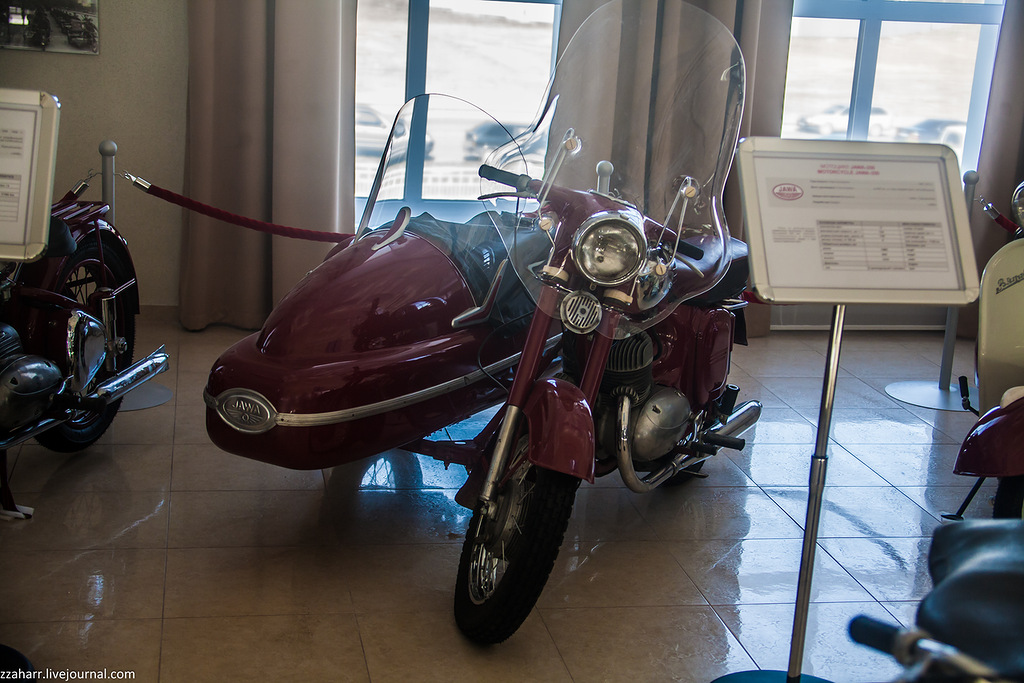
40. Izh-49. It was produced by the Izhevsk Machine-Building Plant from 1951 to 1958. 350 cubes, 11 hp 
41.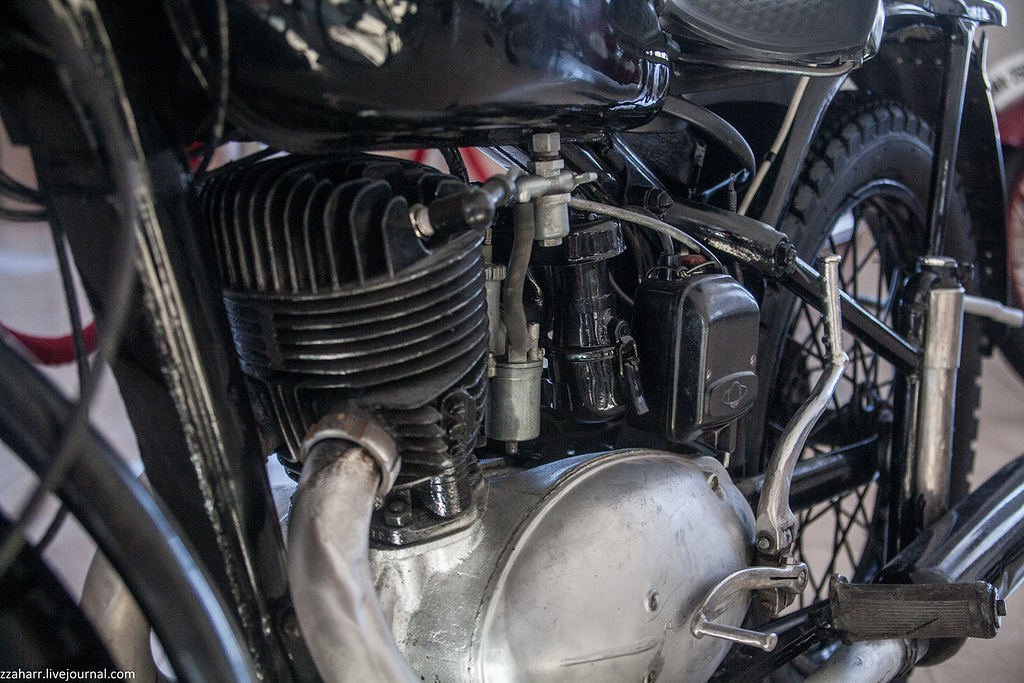
42. Motorcycle Jawa 350 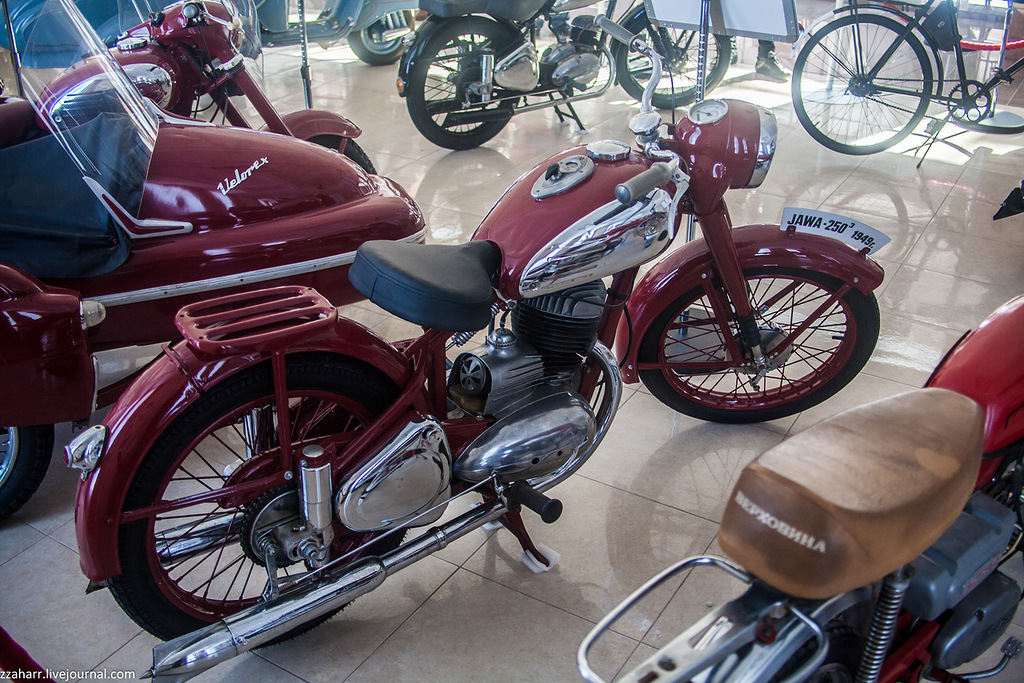
43.
44.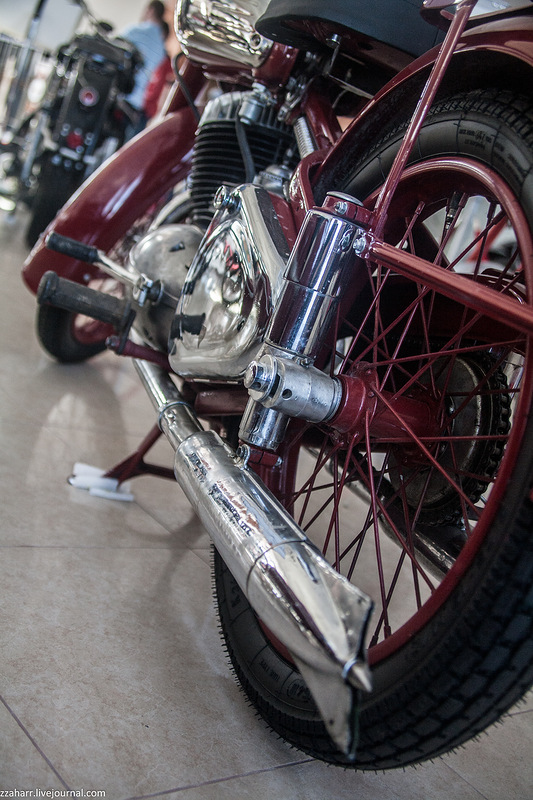
45. And at the end of our tour today - Moped Verkhovyna 7
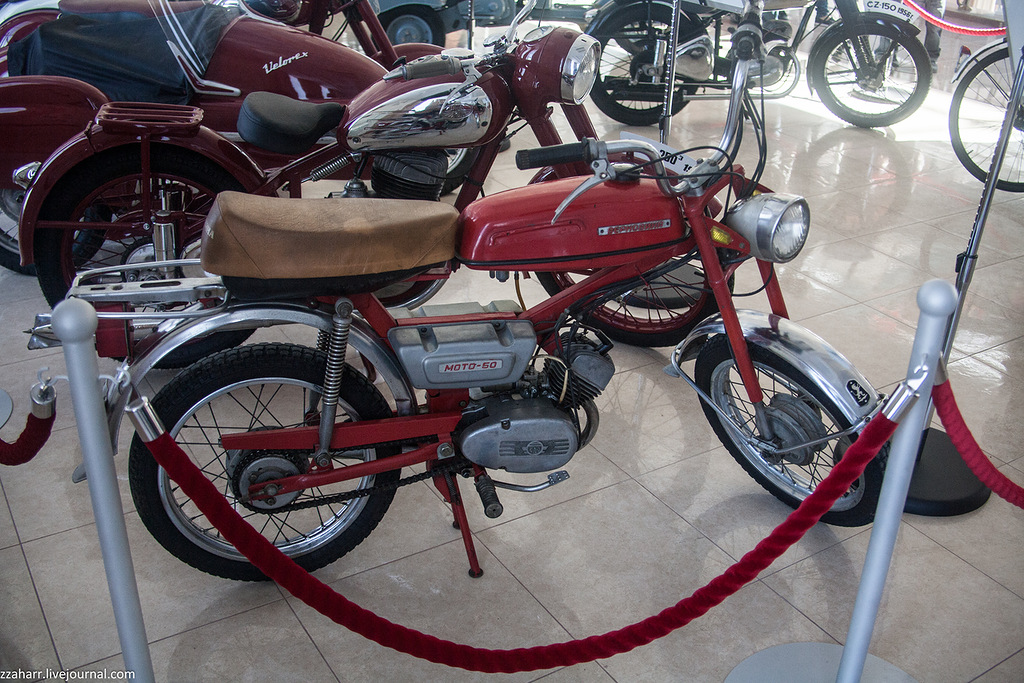
But that is not all. There is also artillery with tanks in this museum! But more about that next time.


